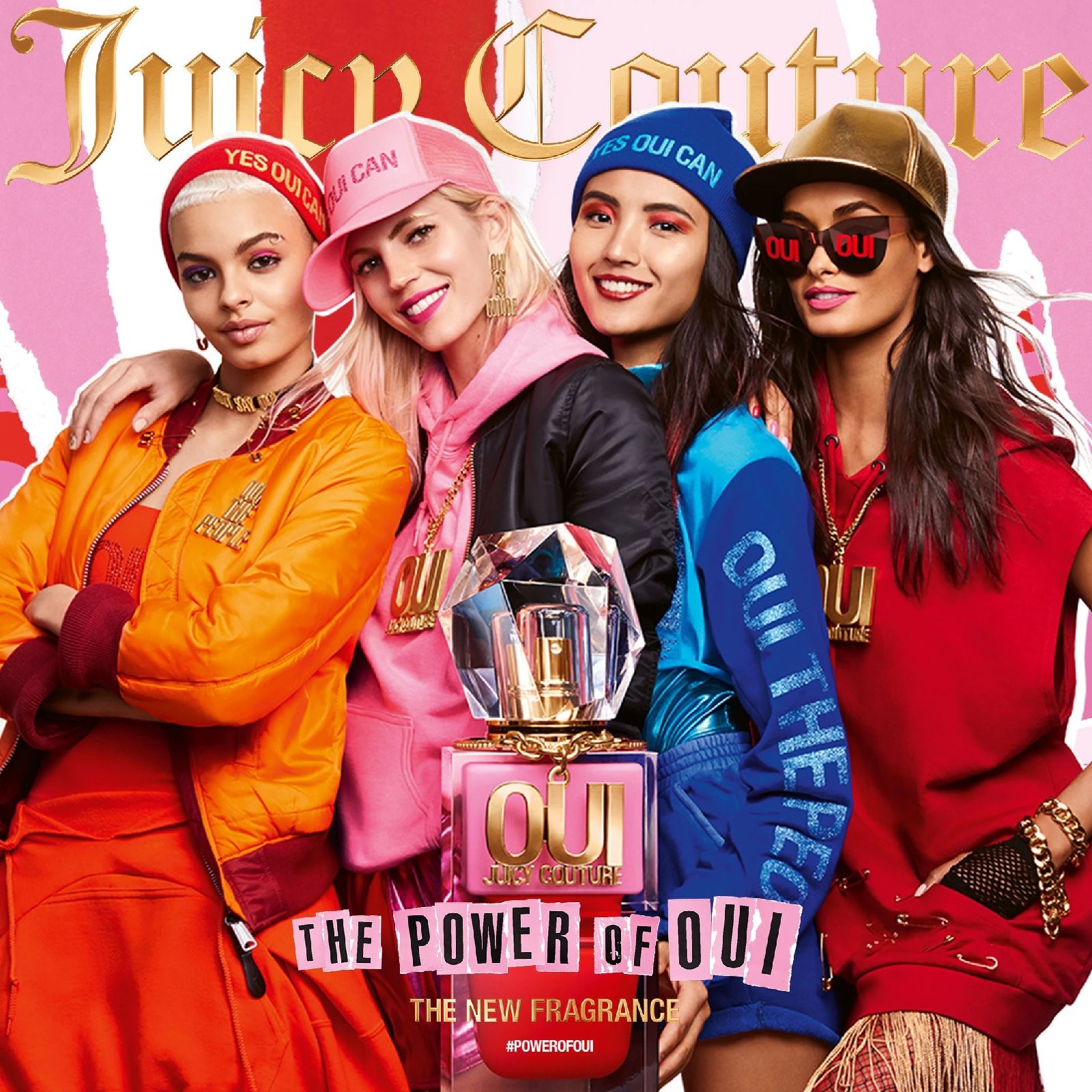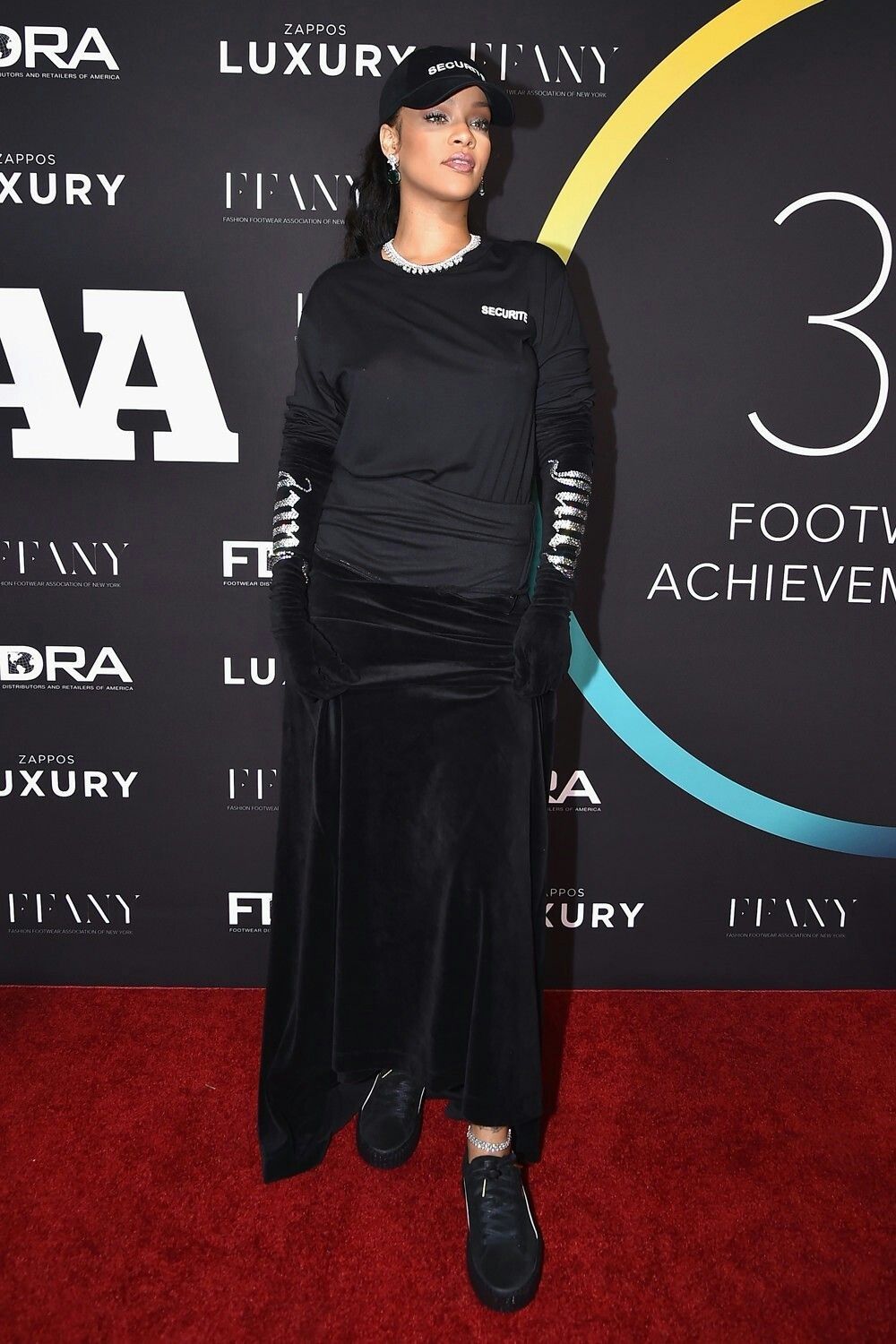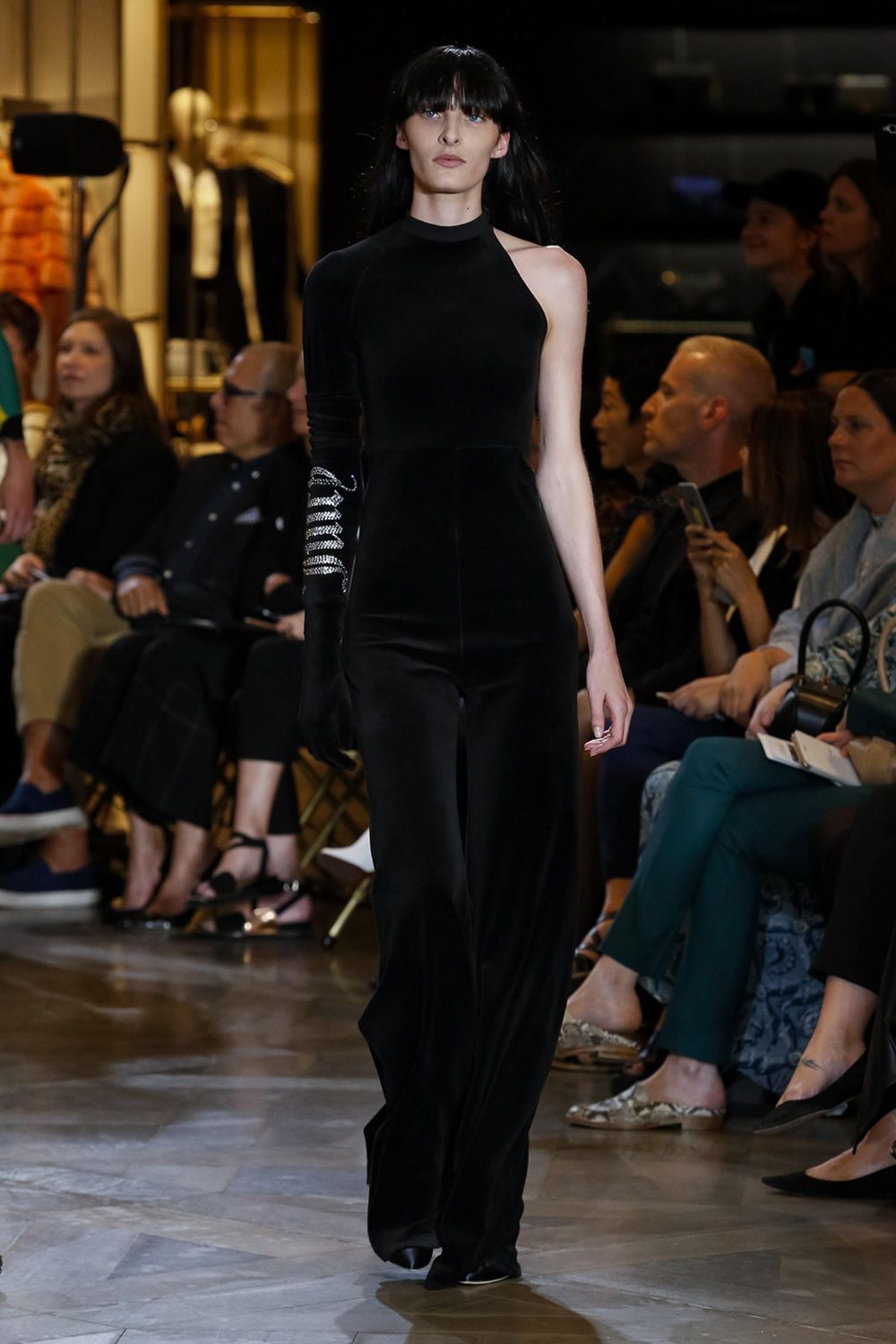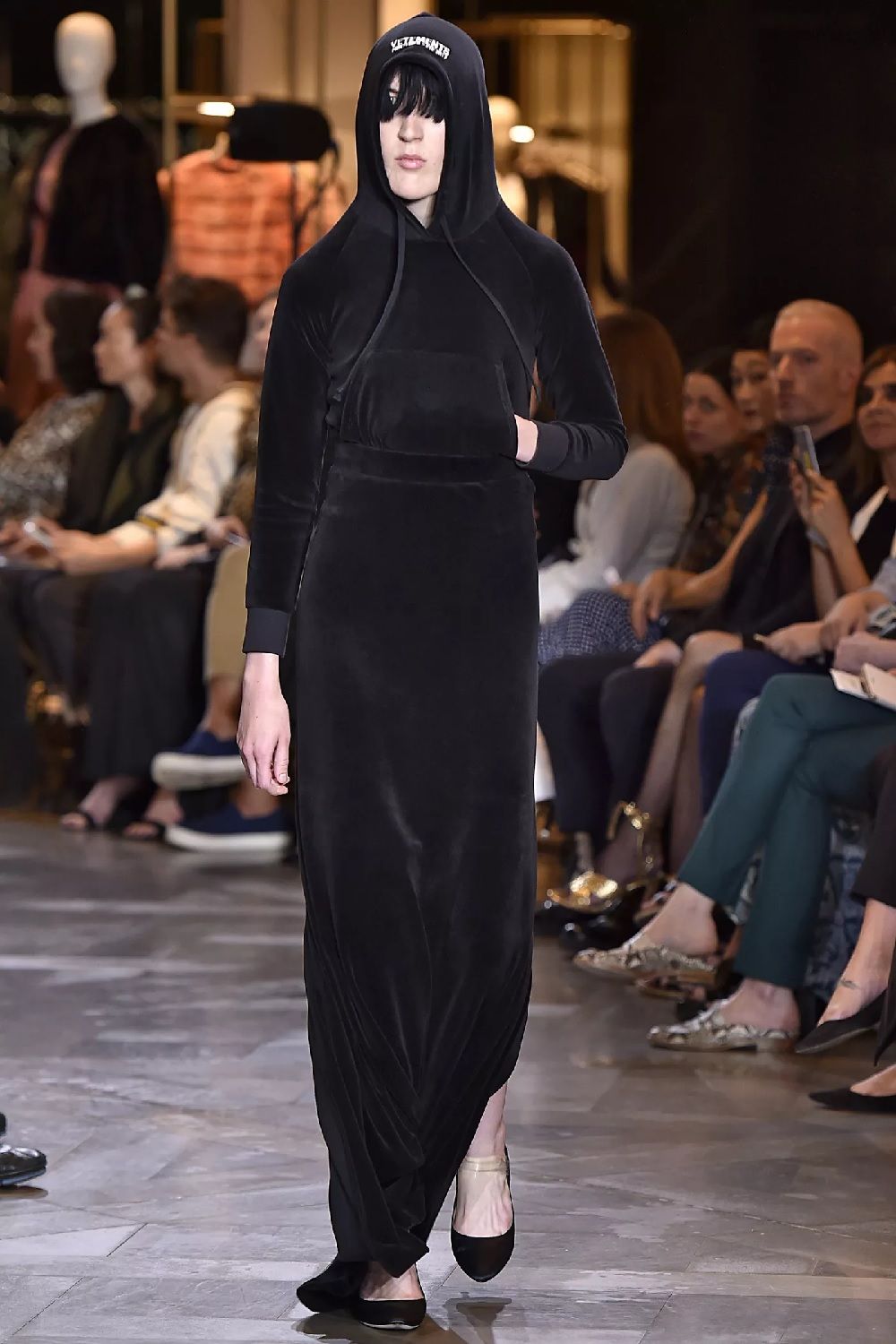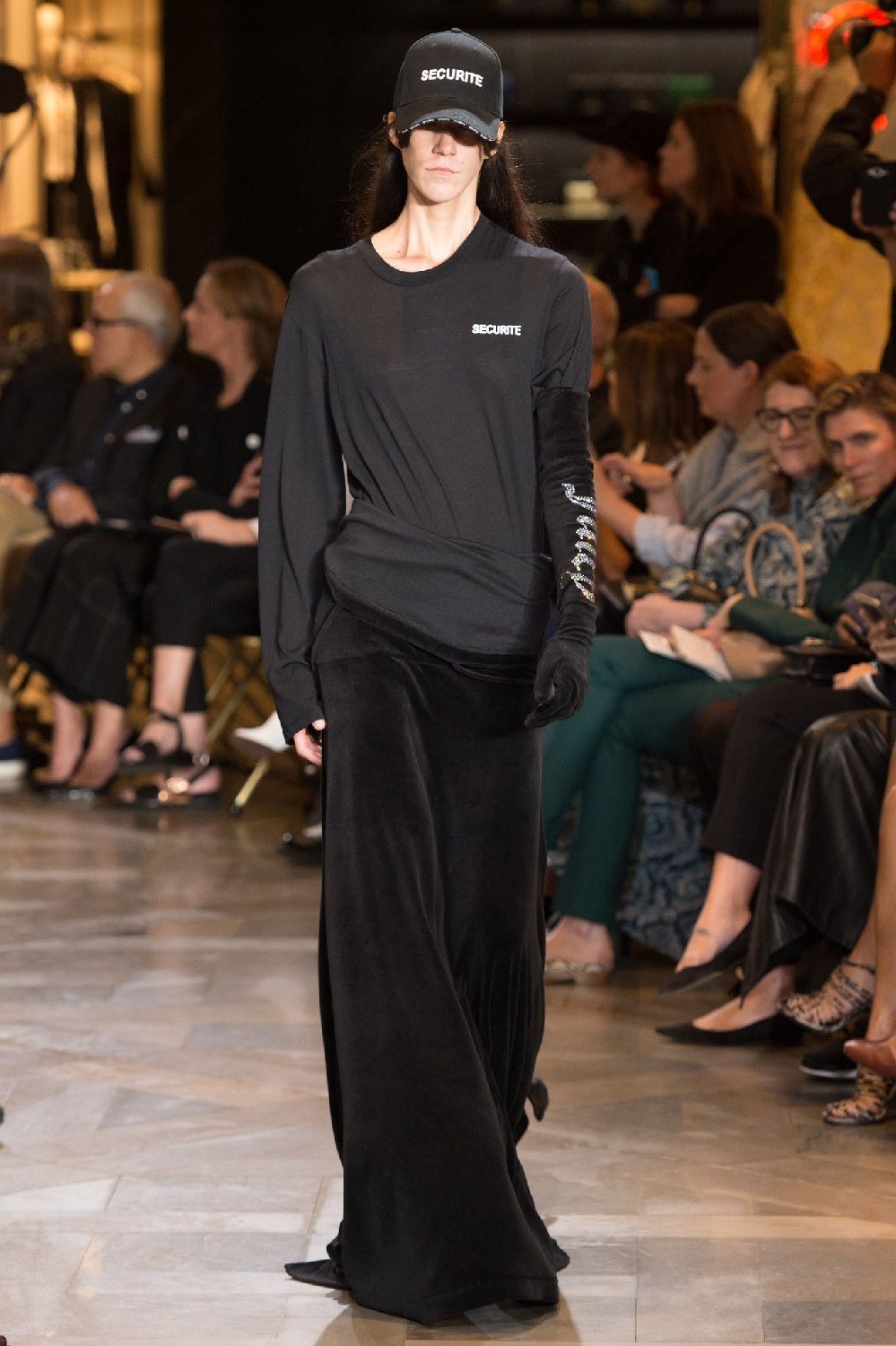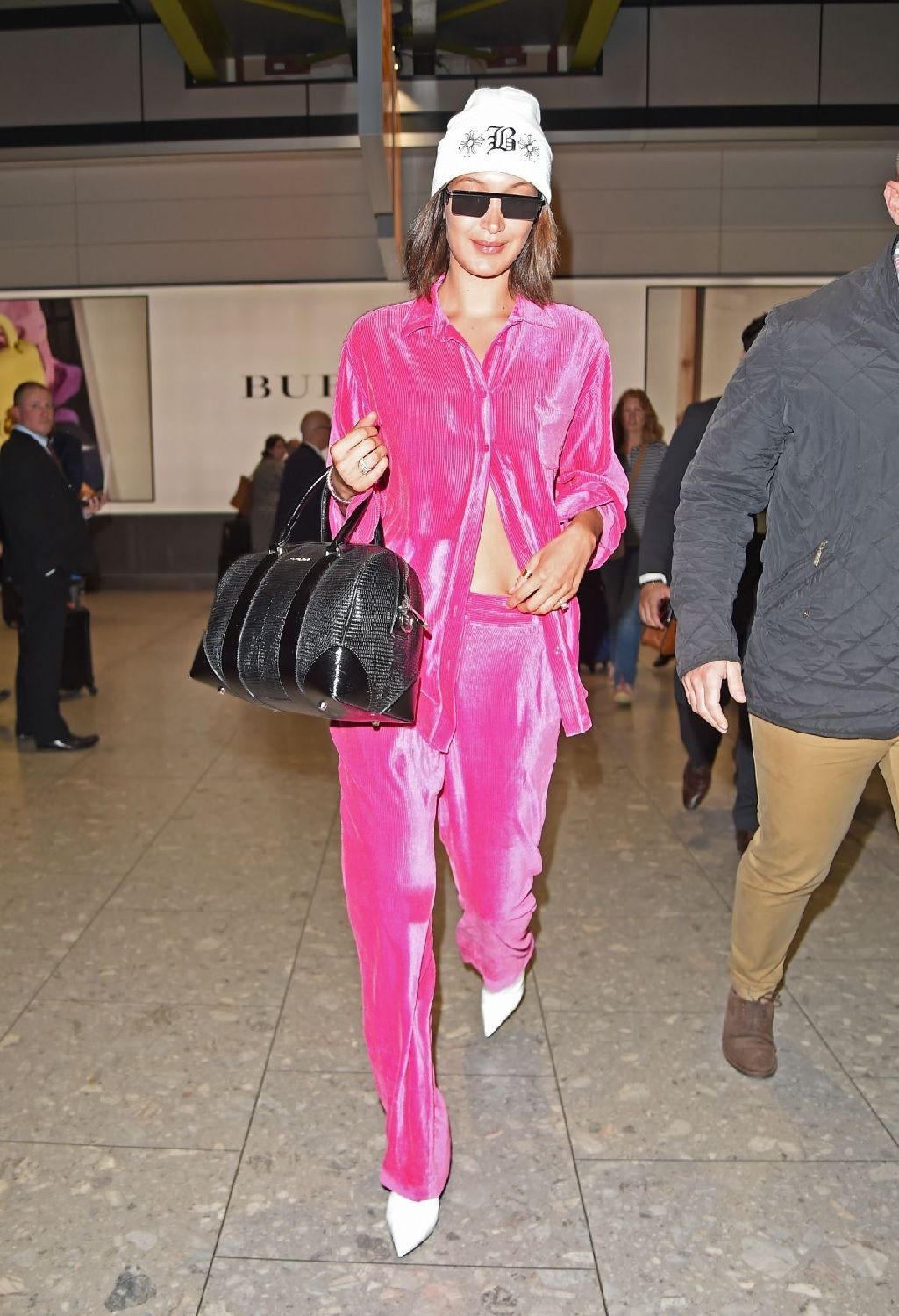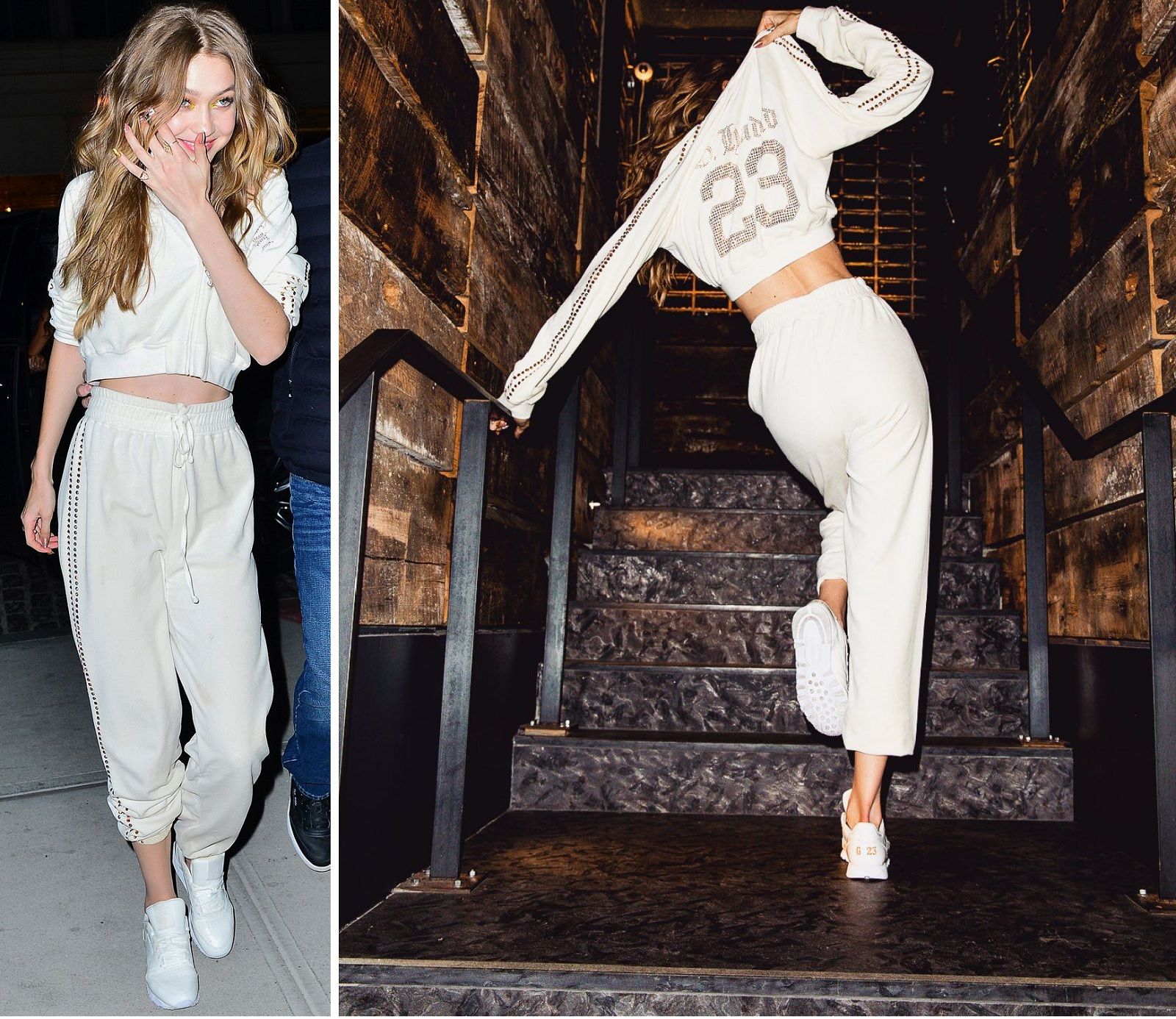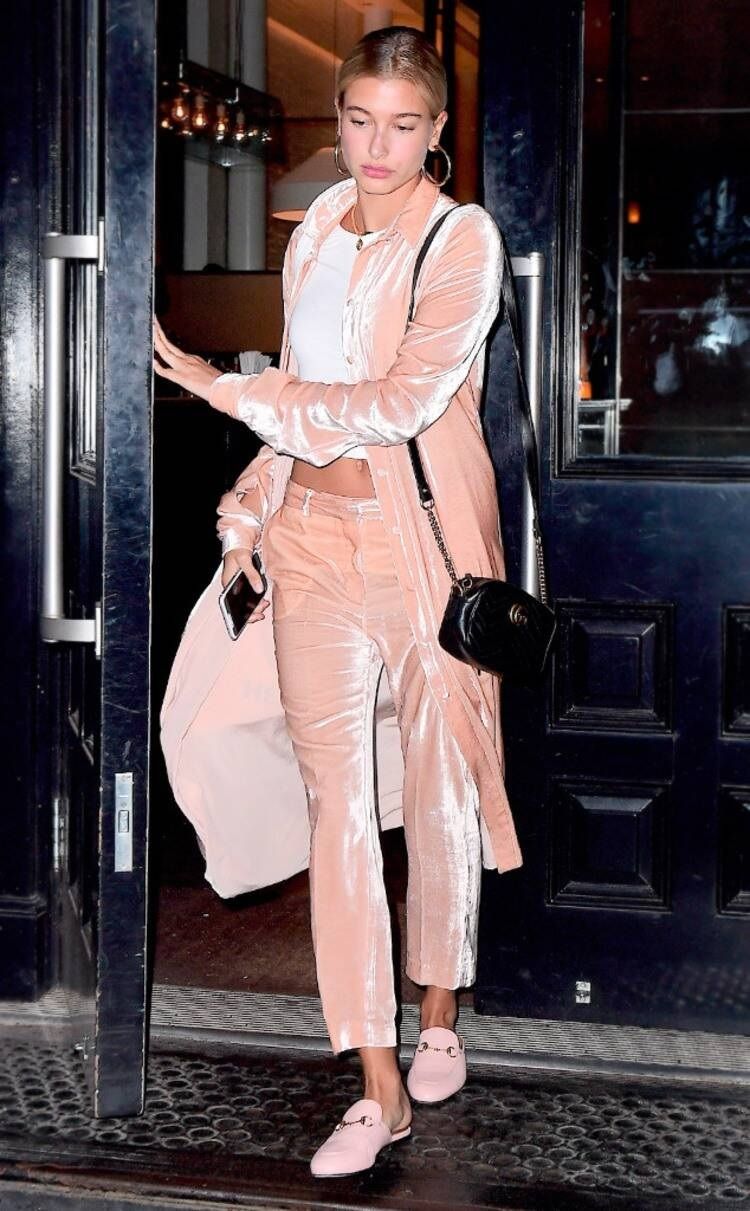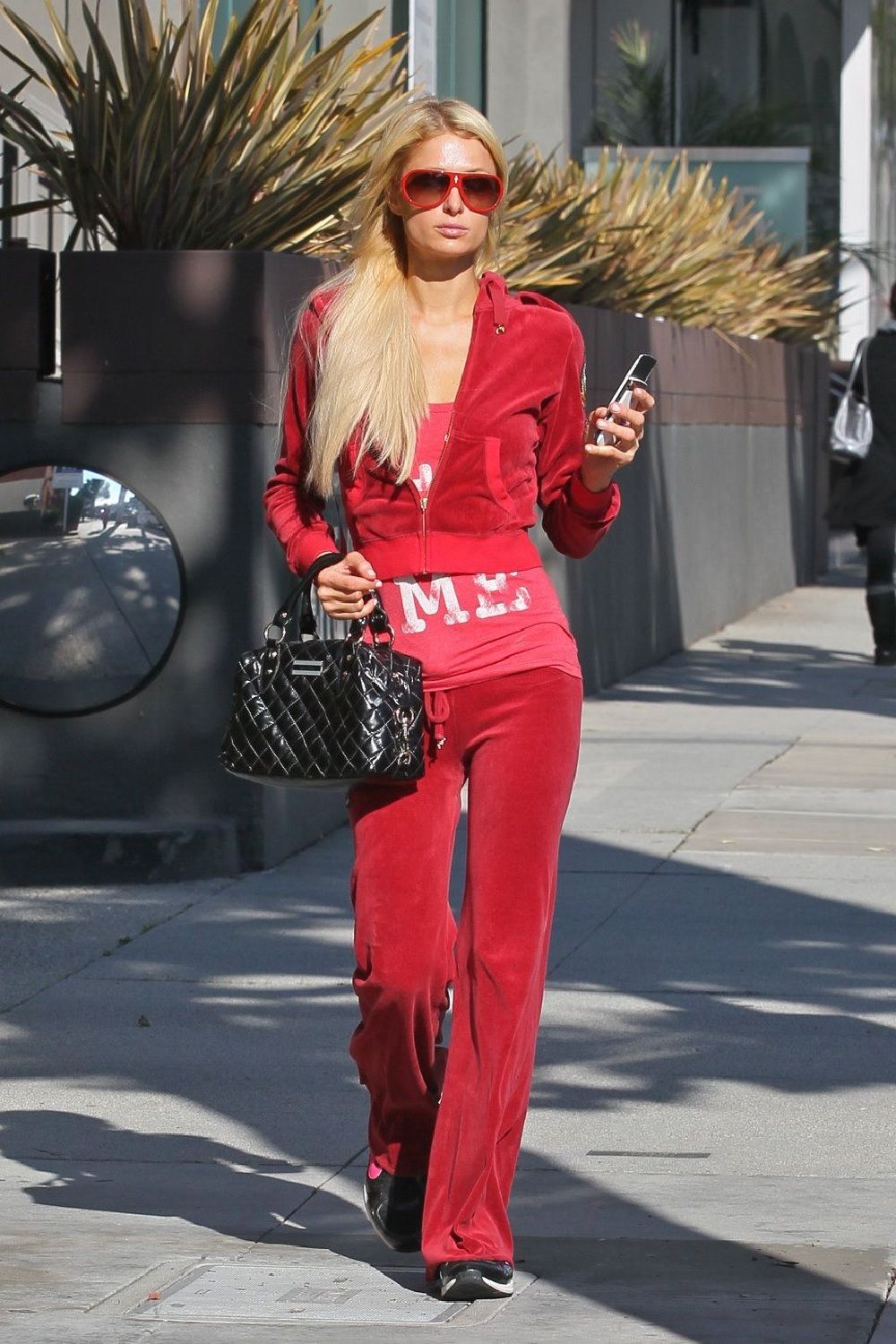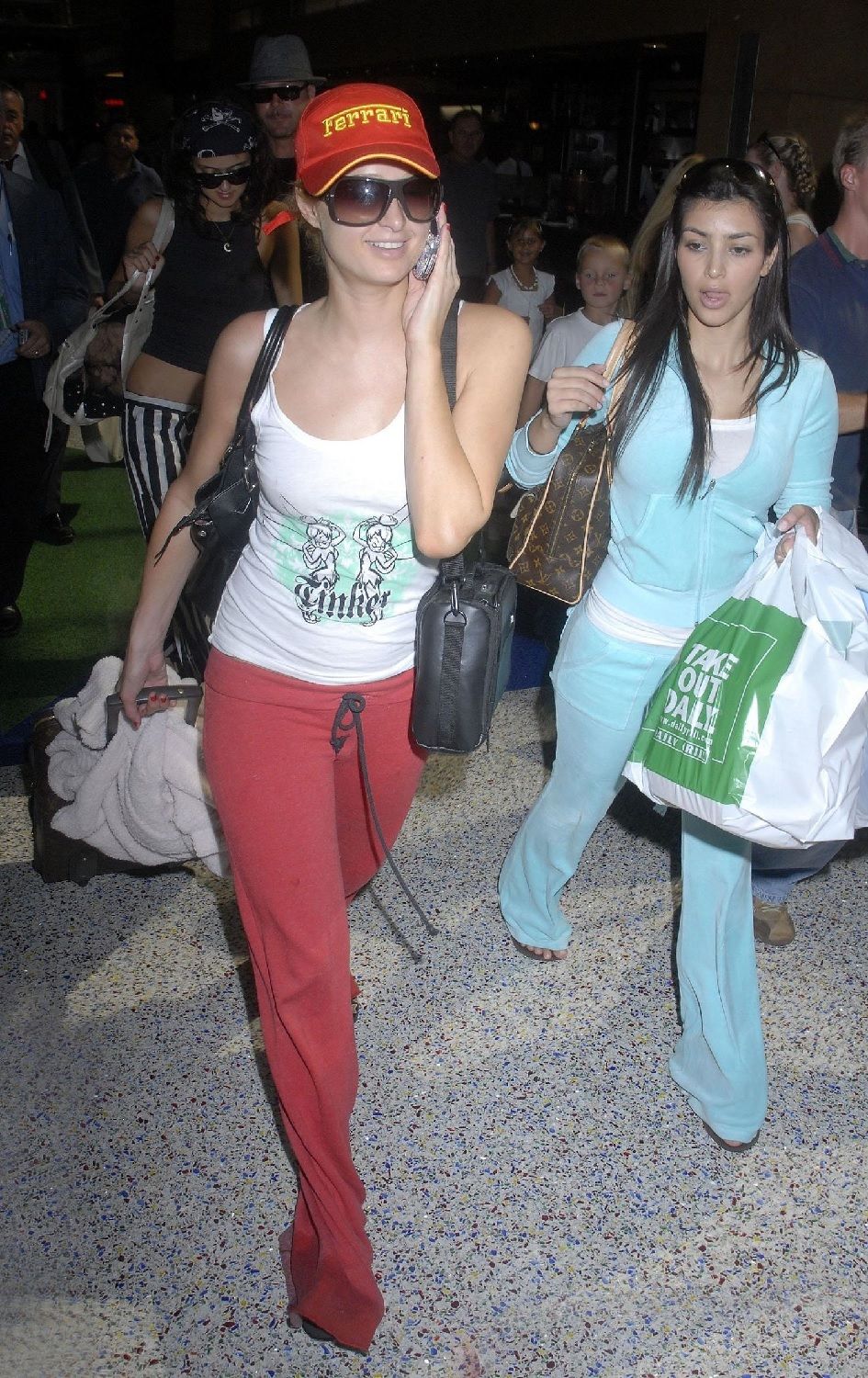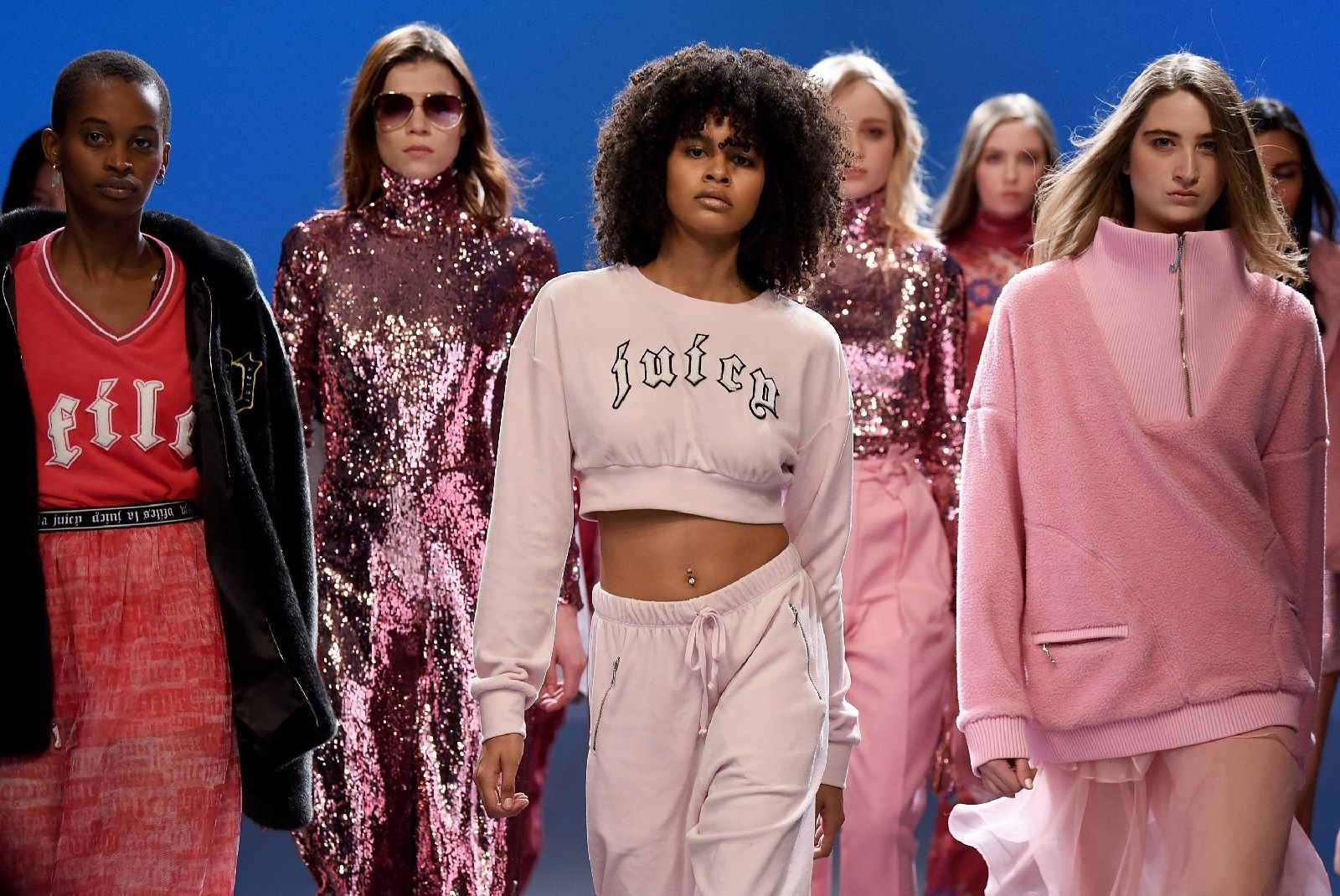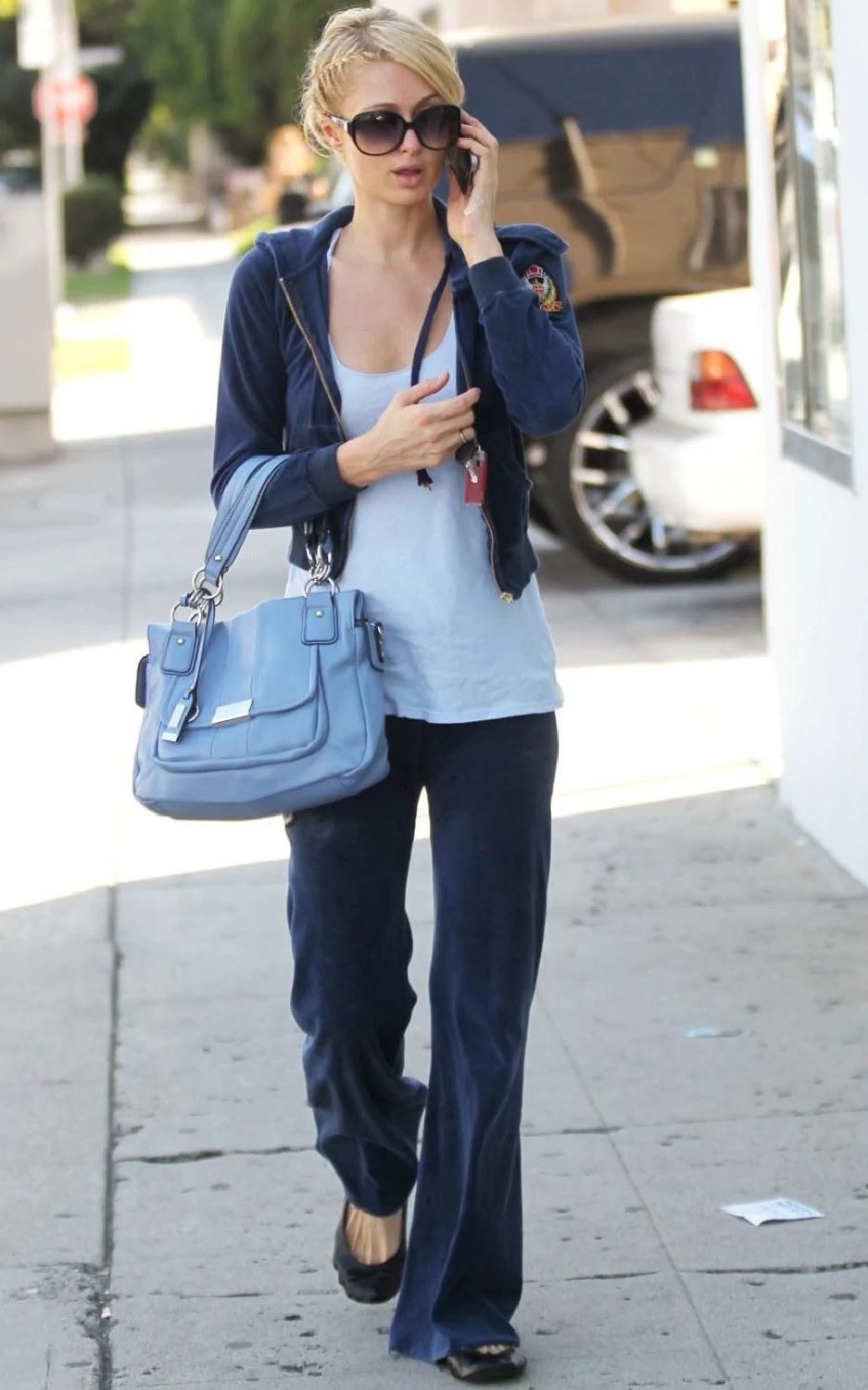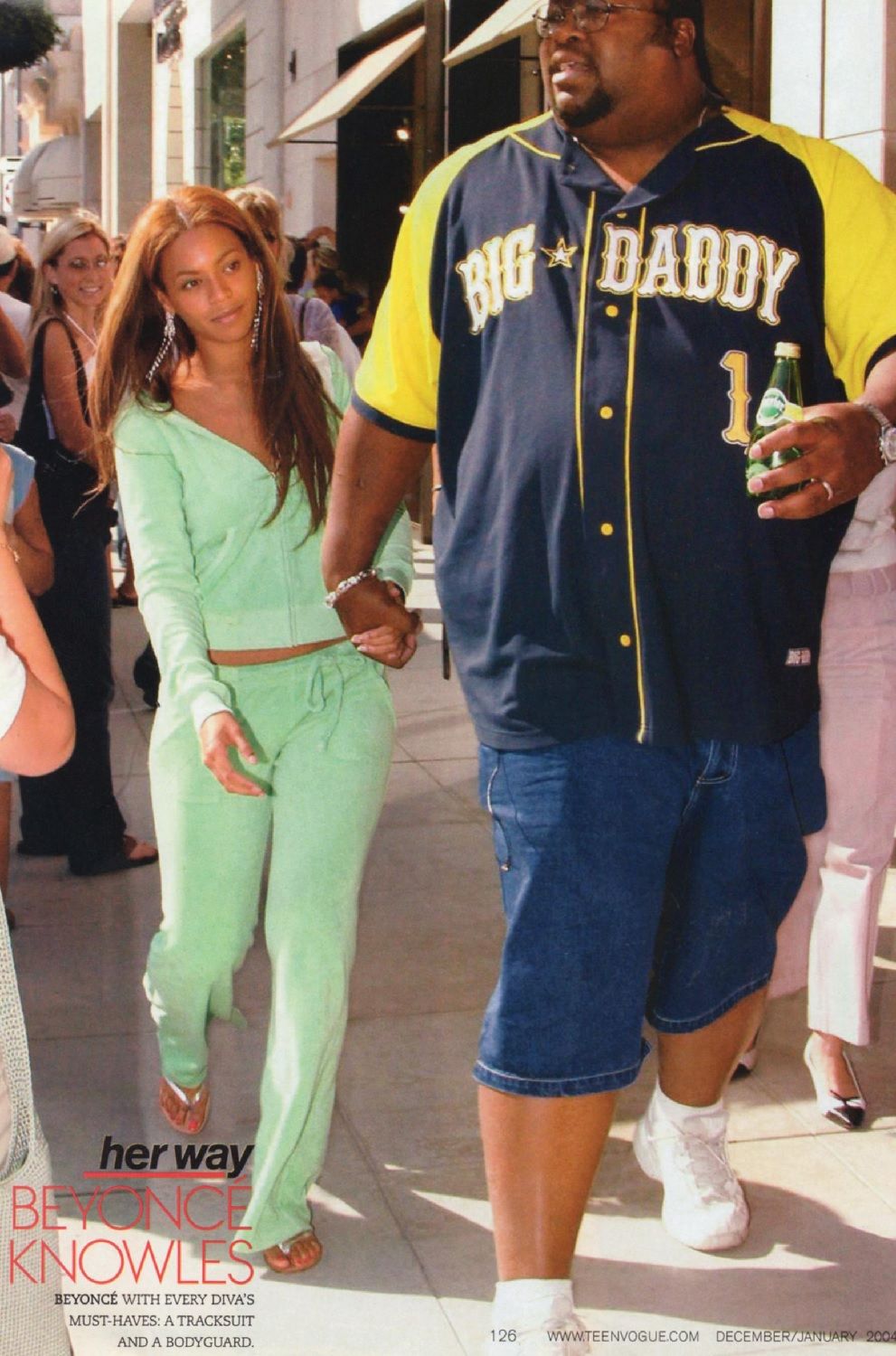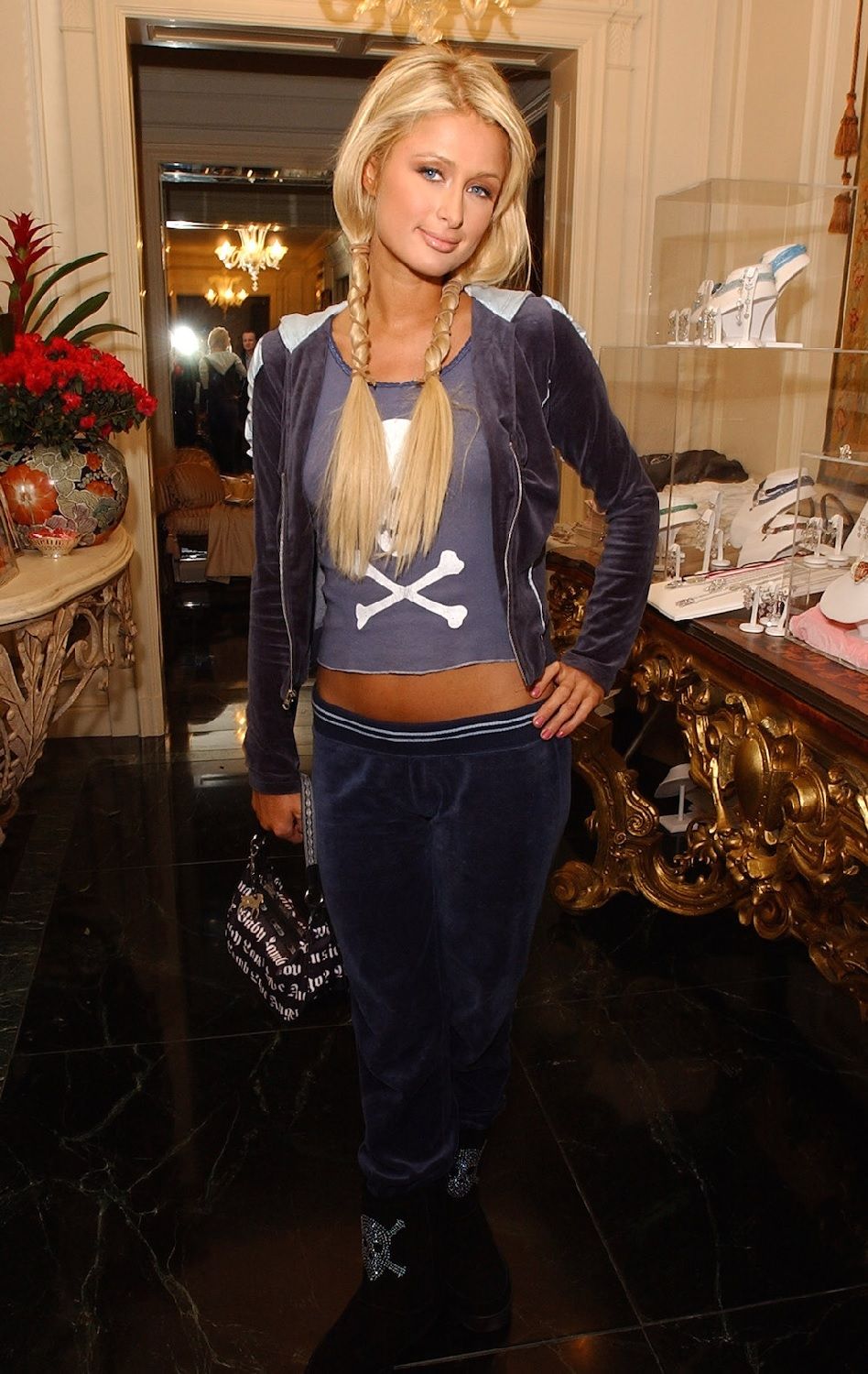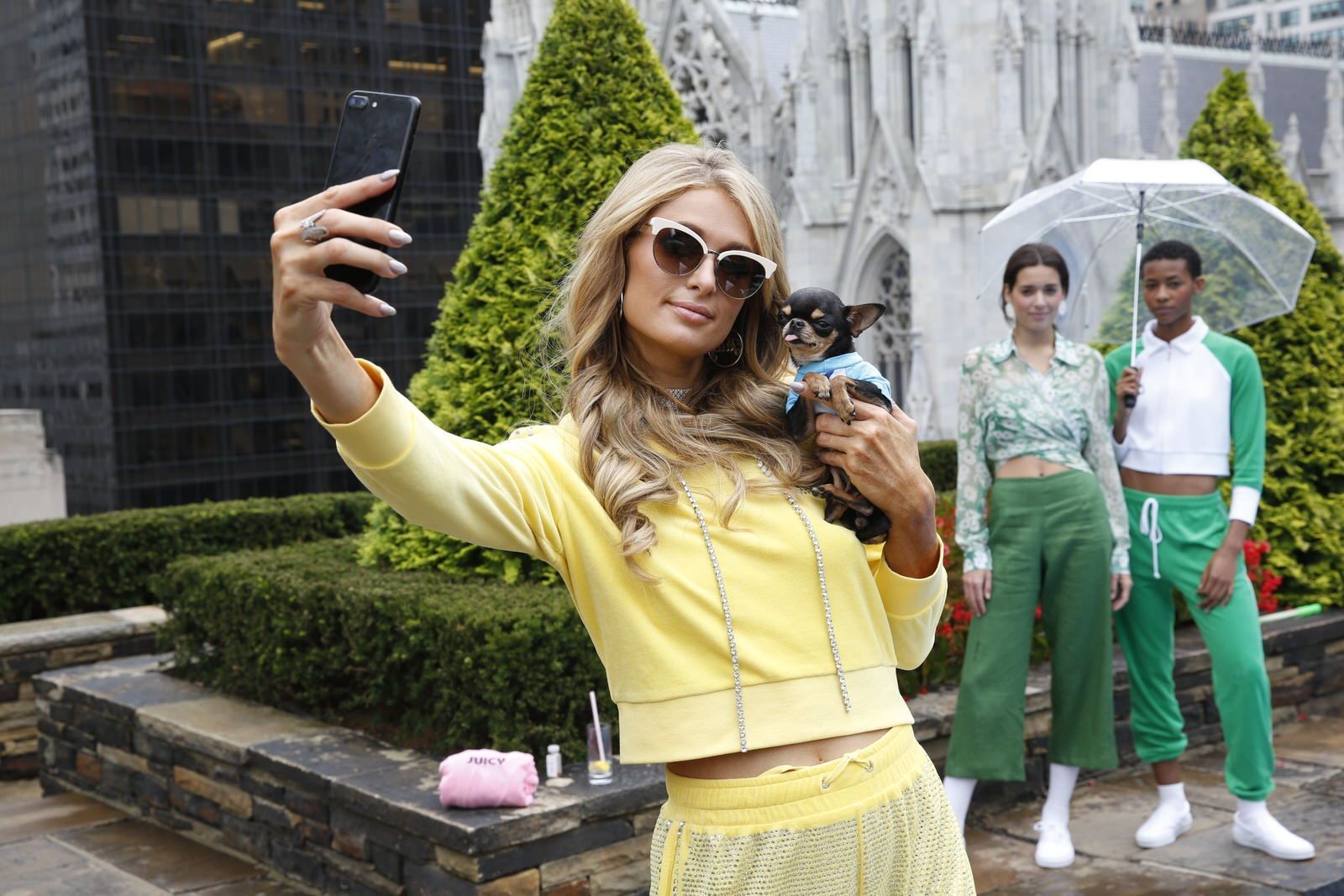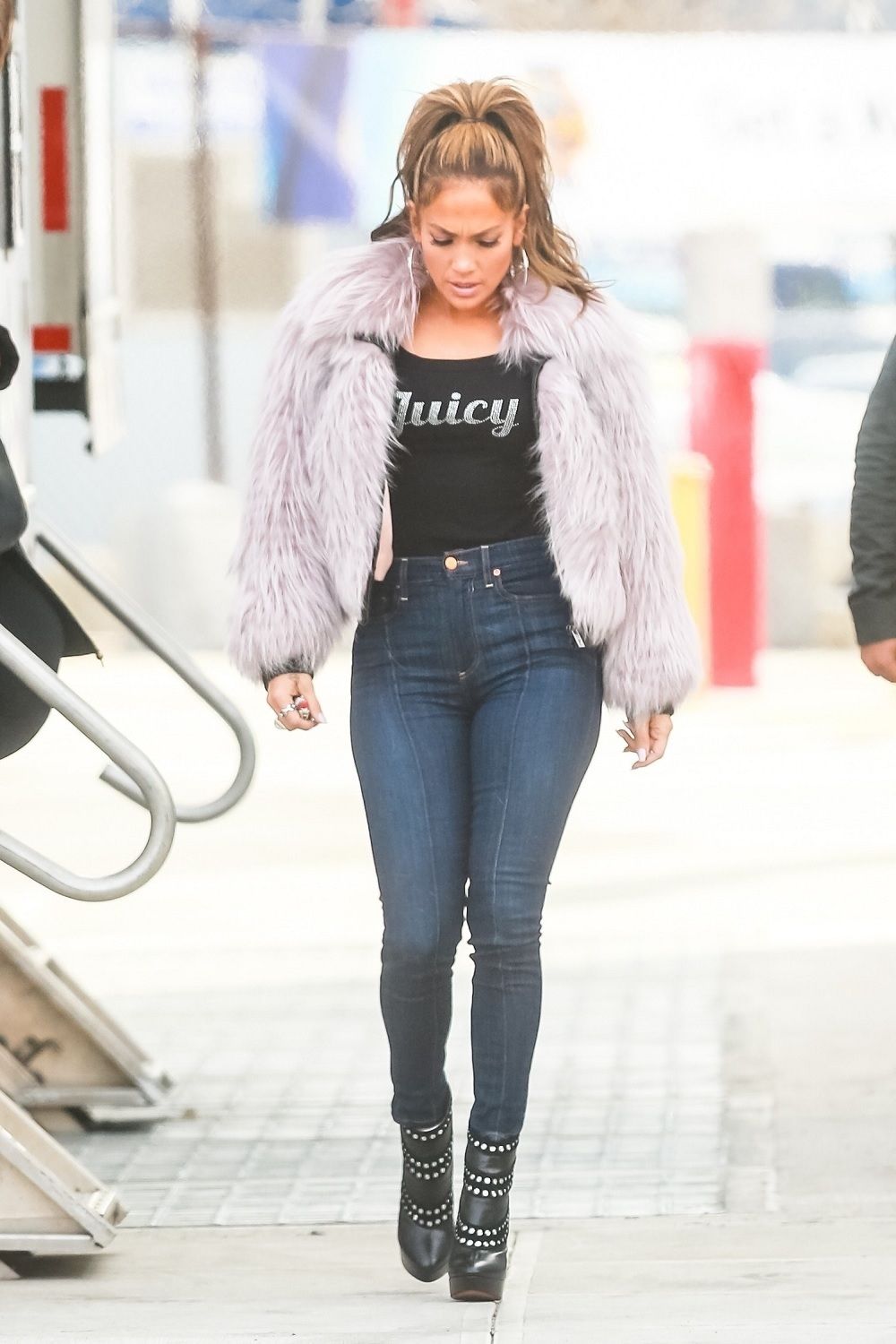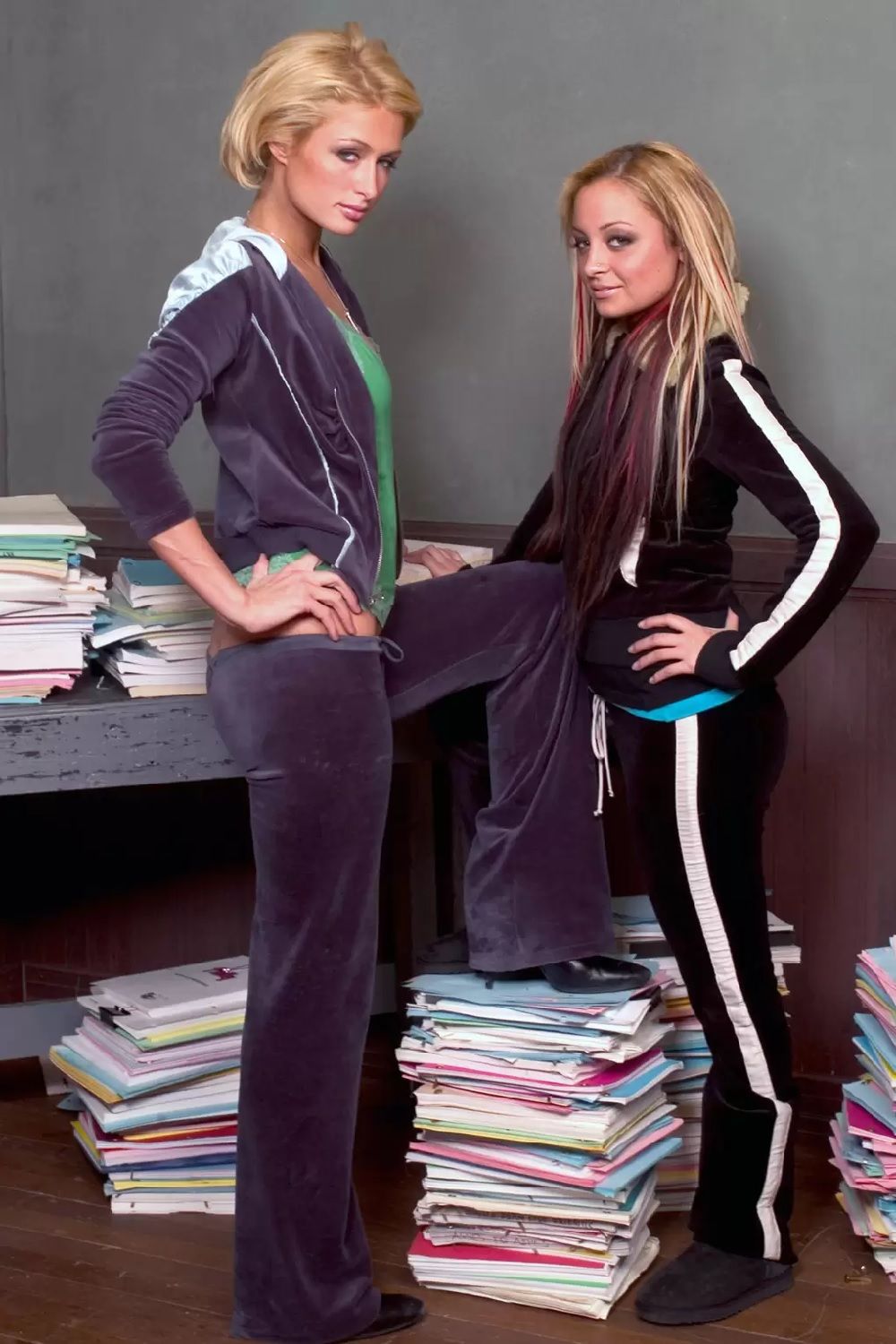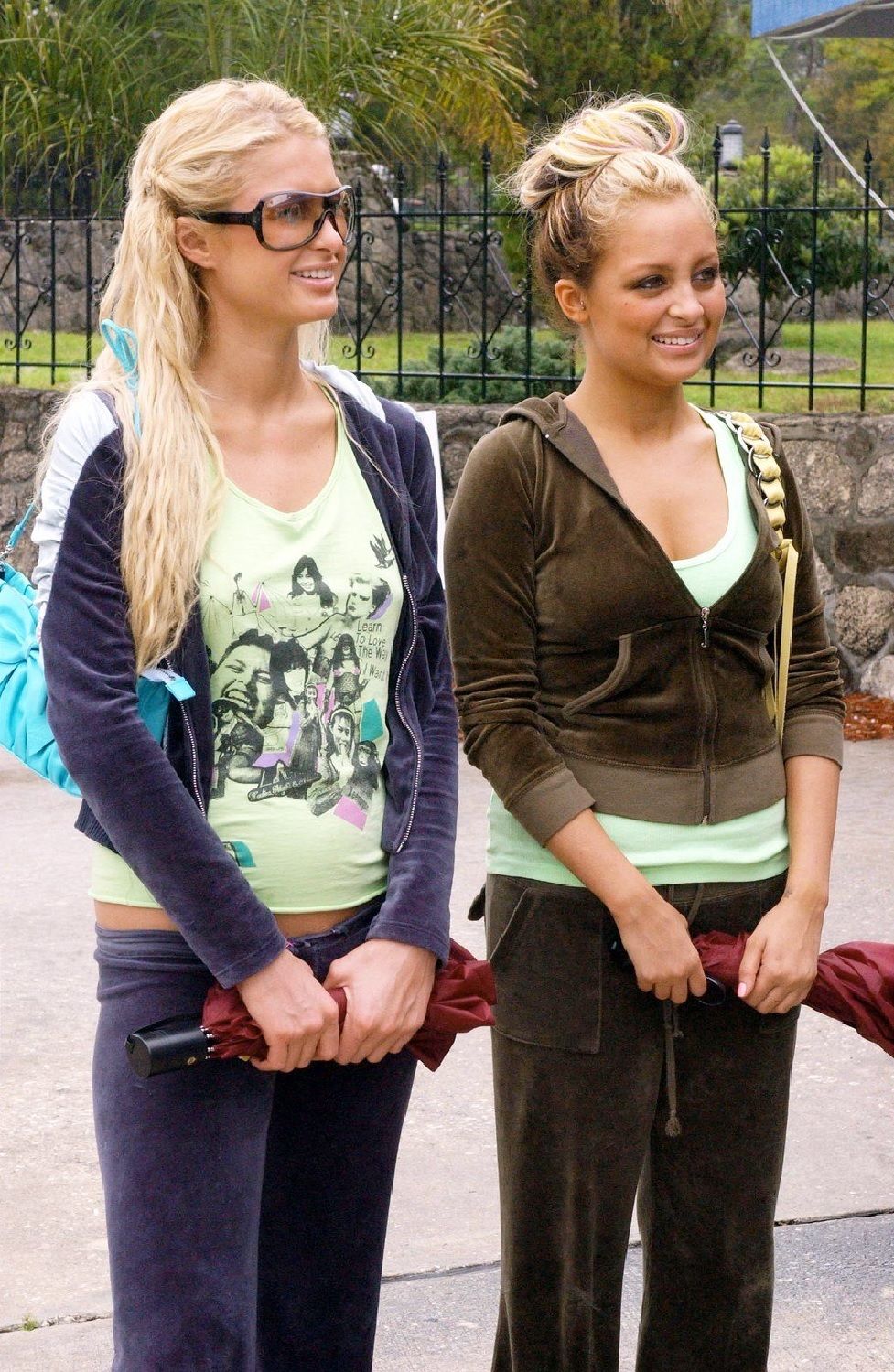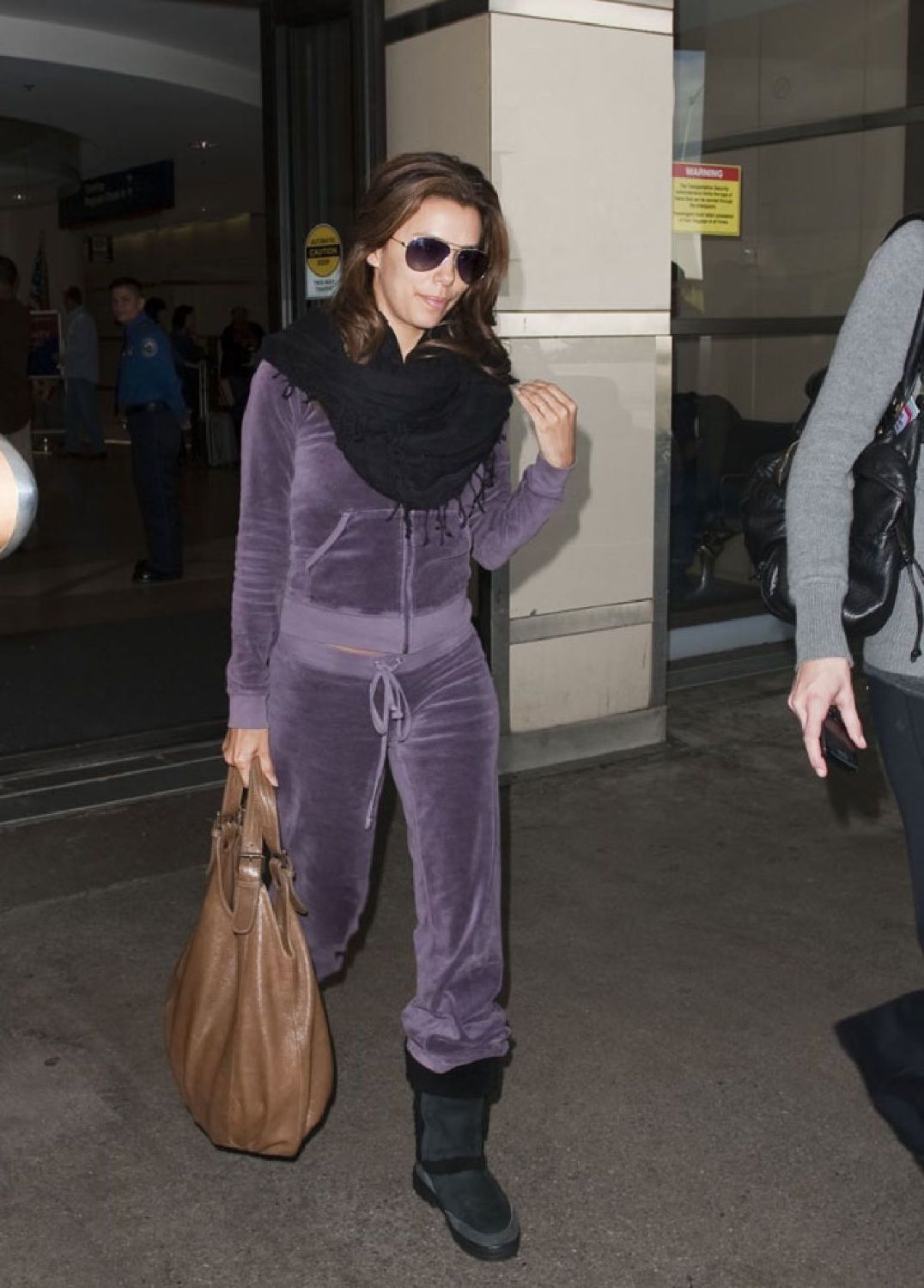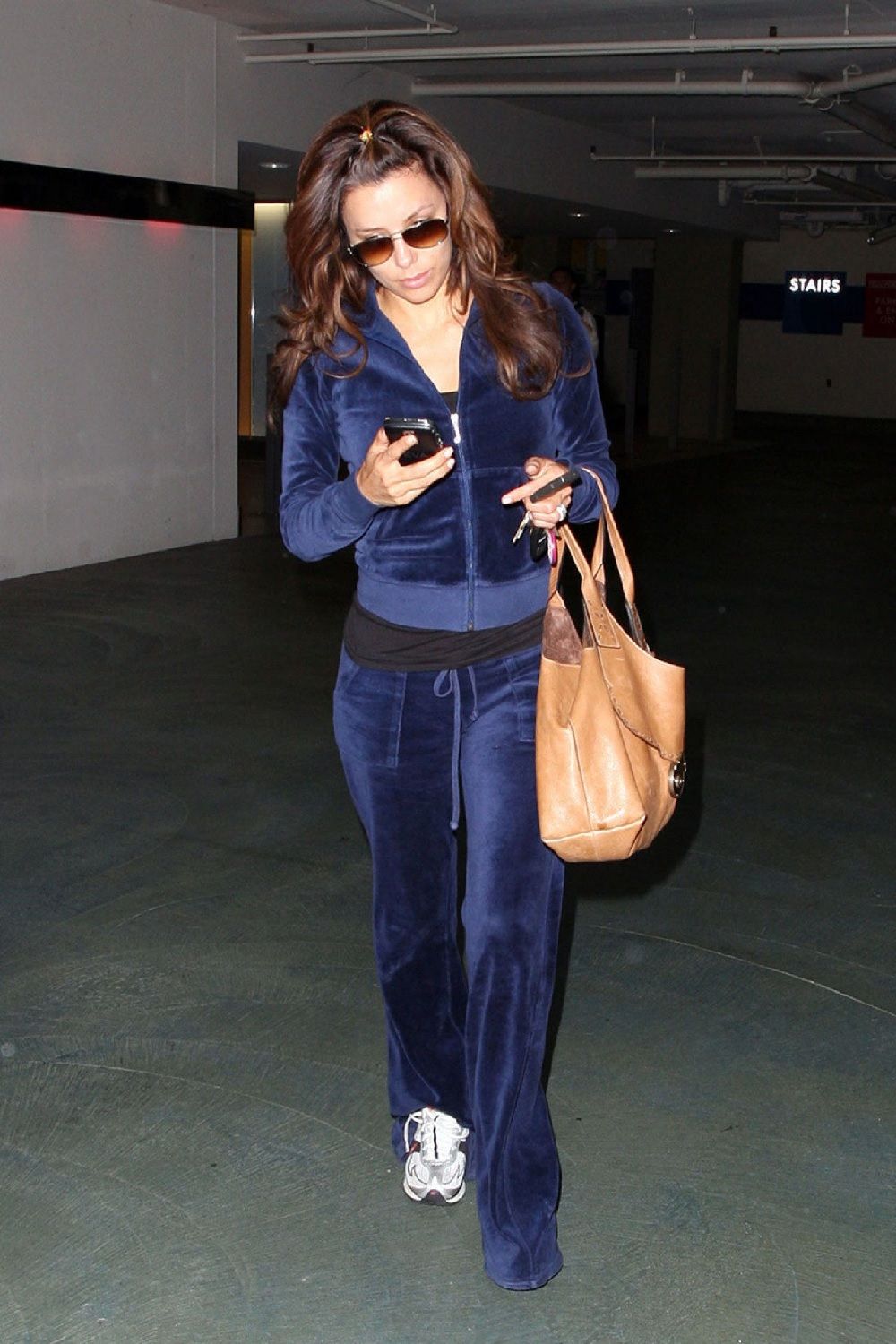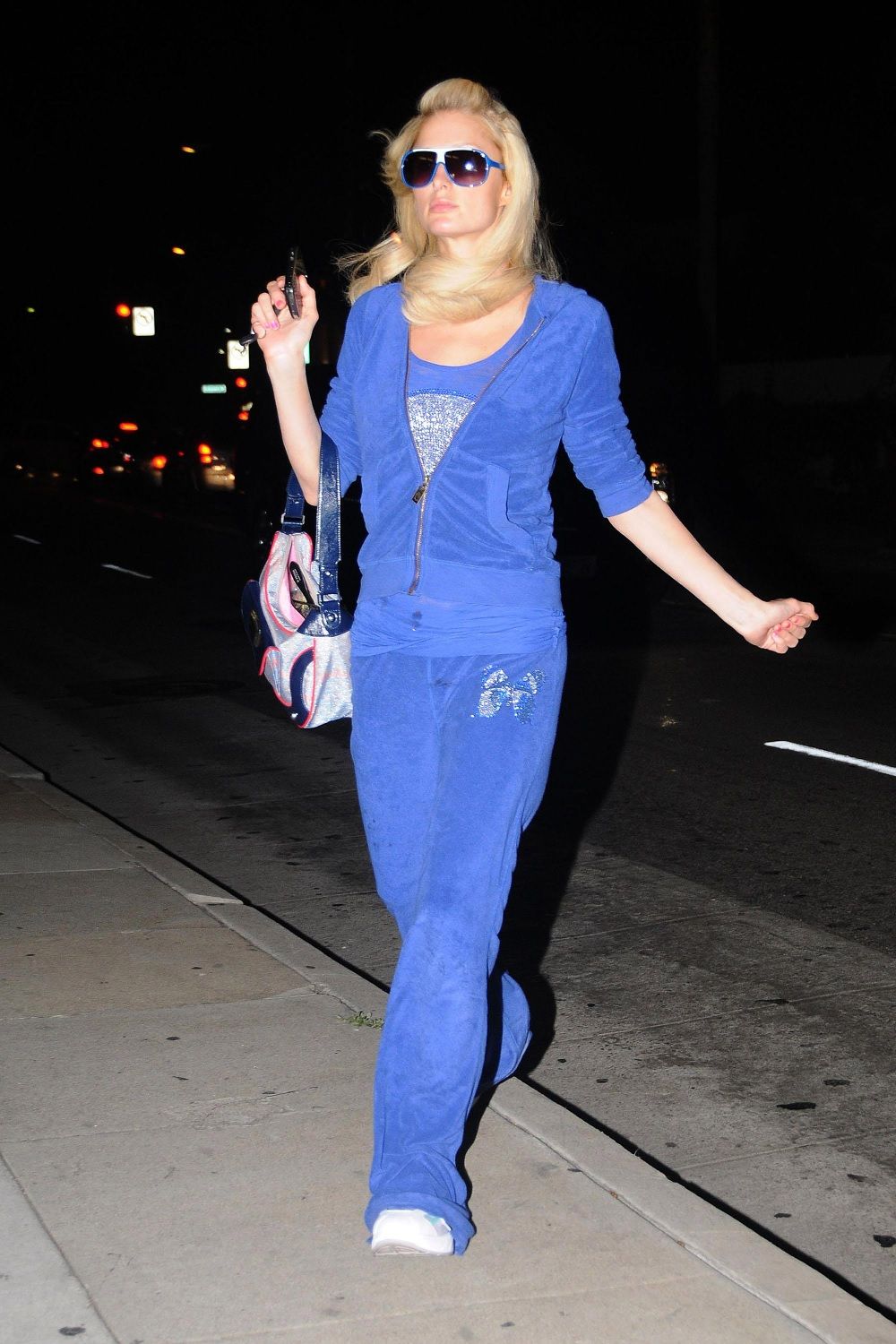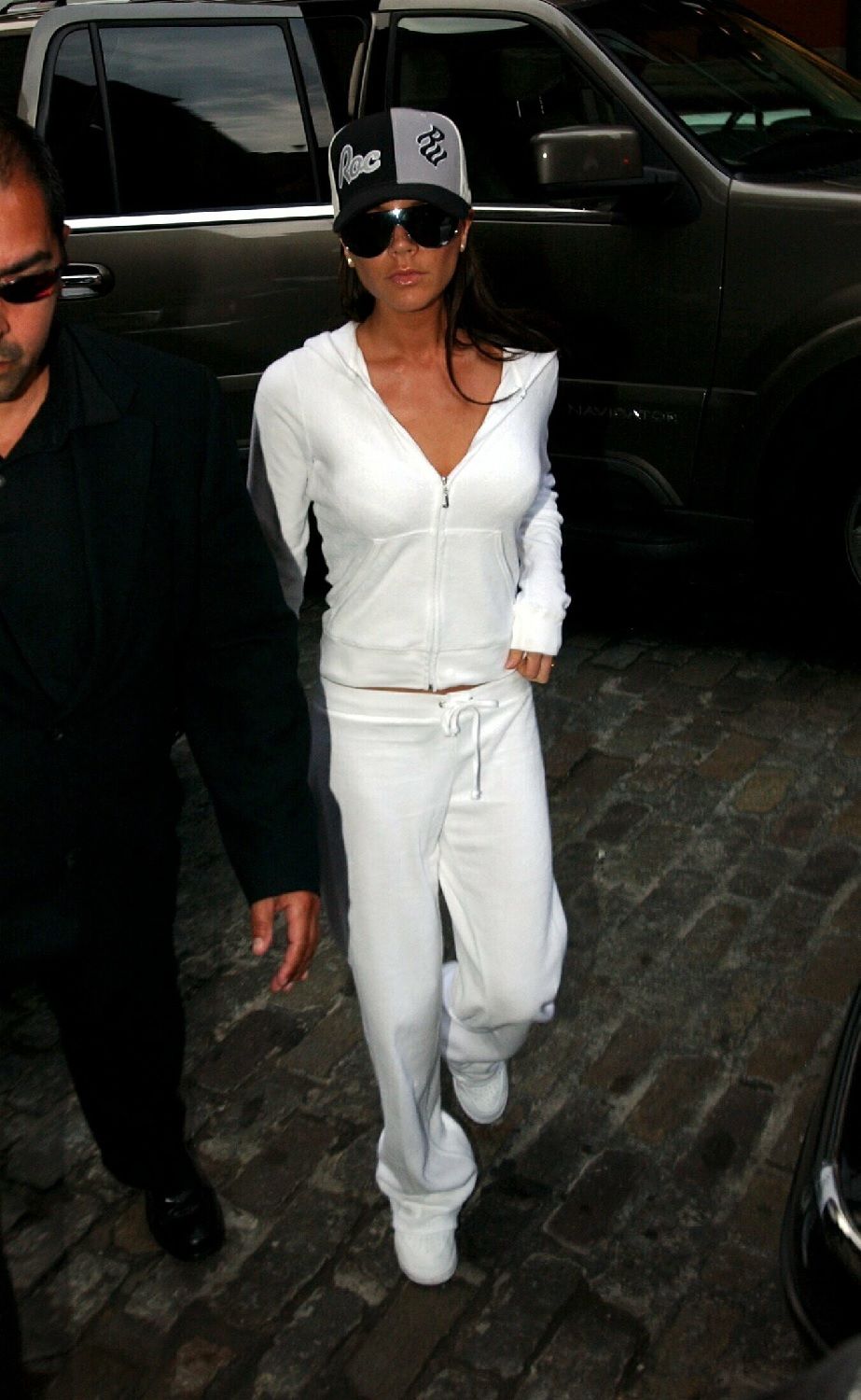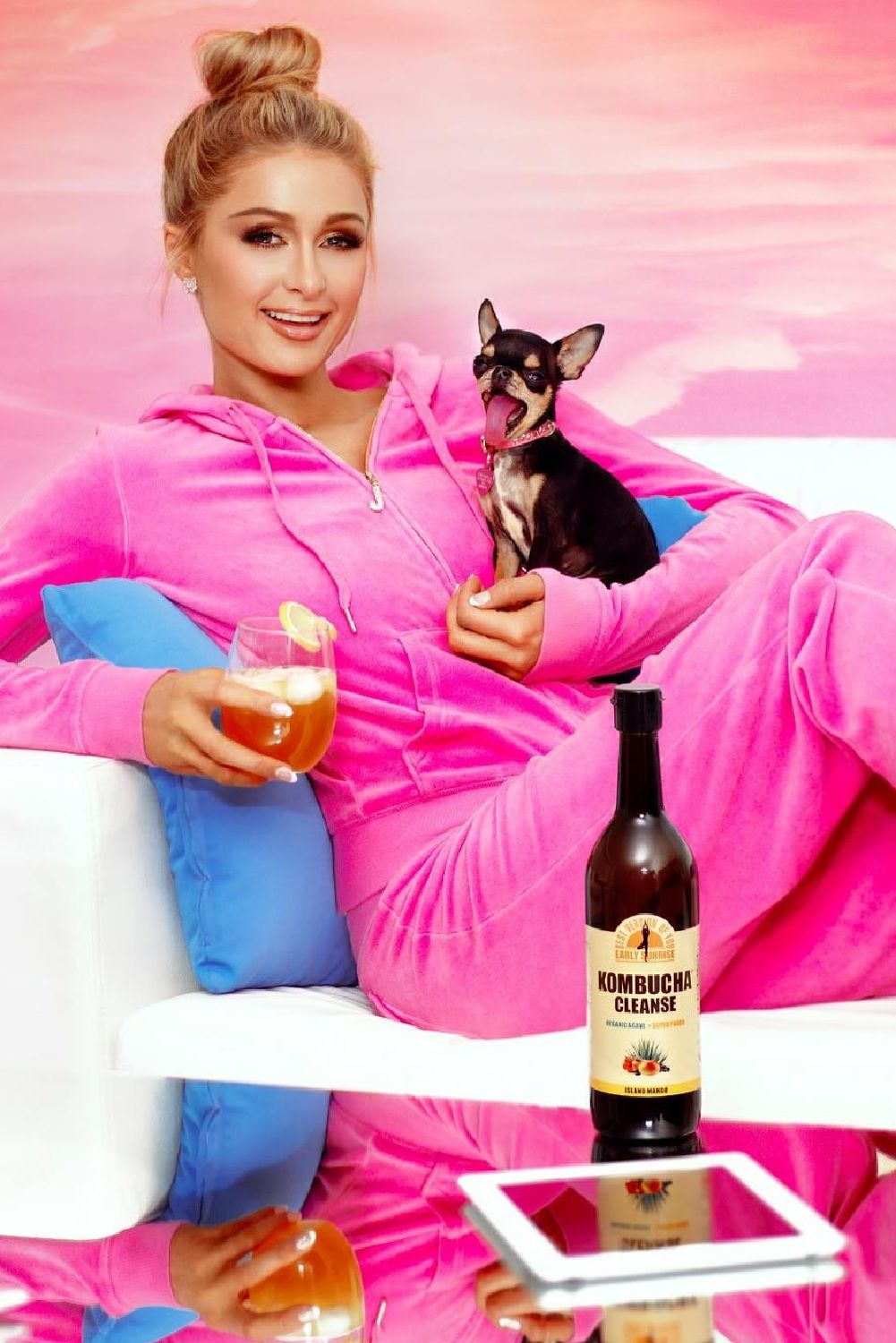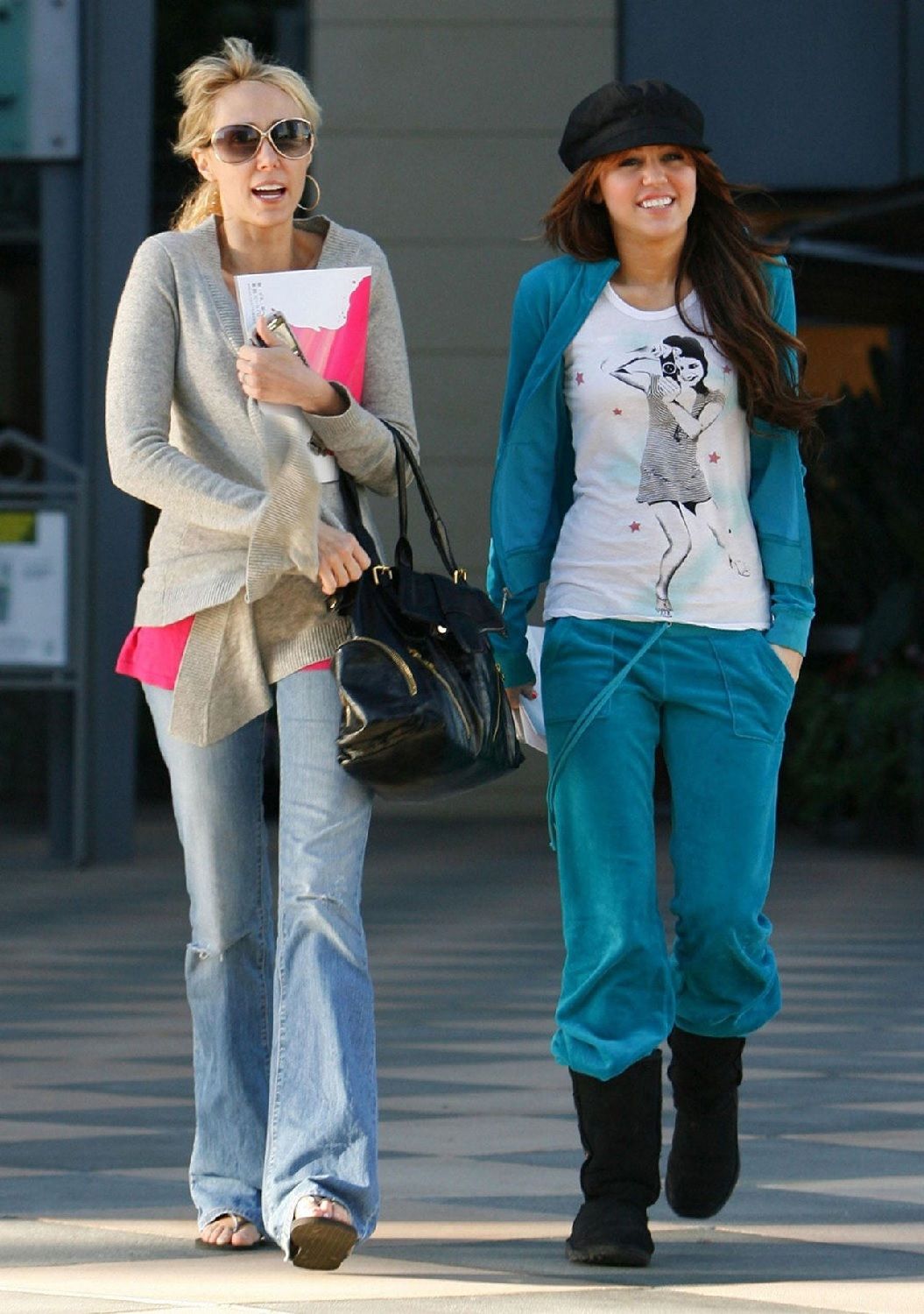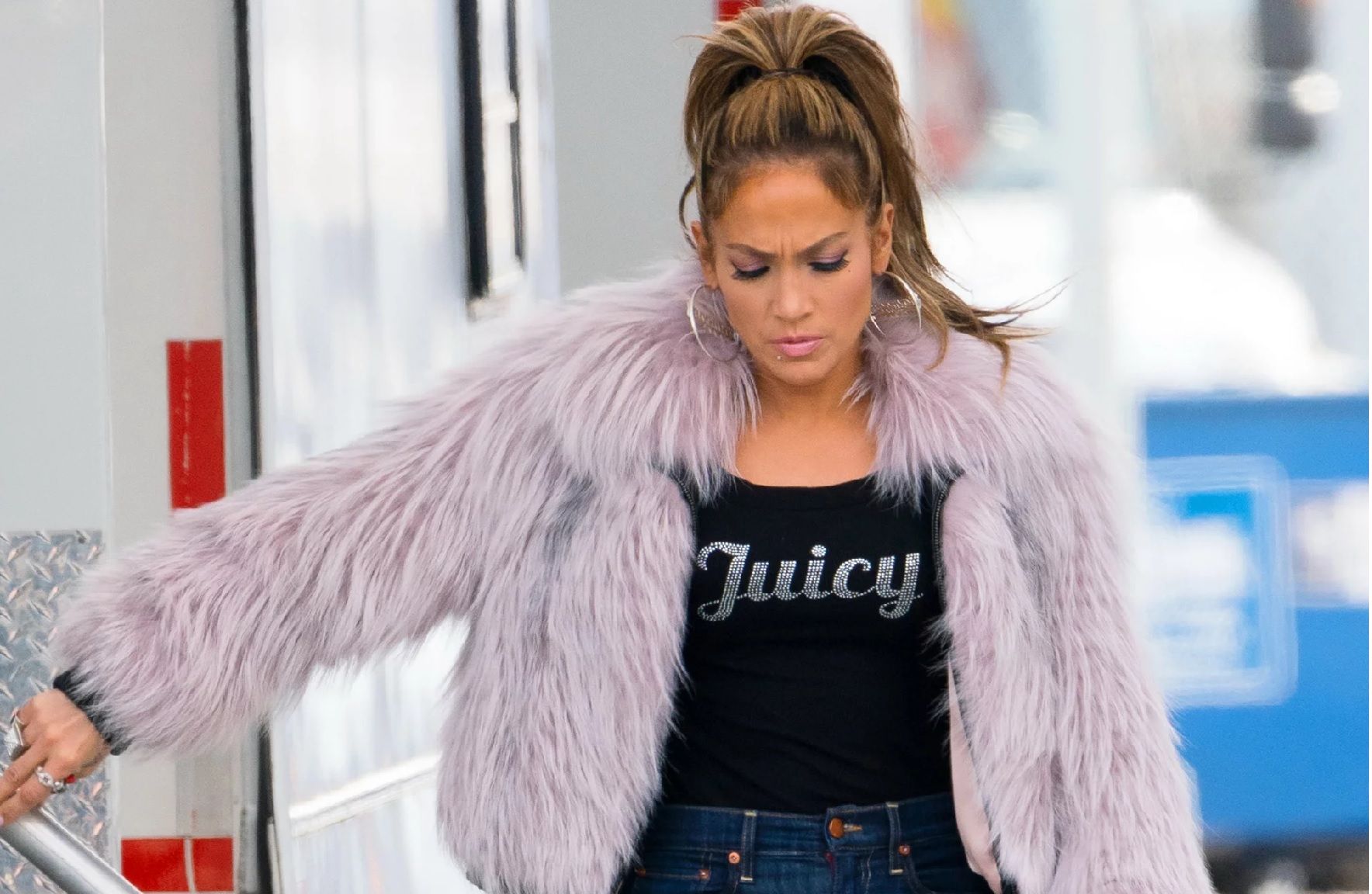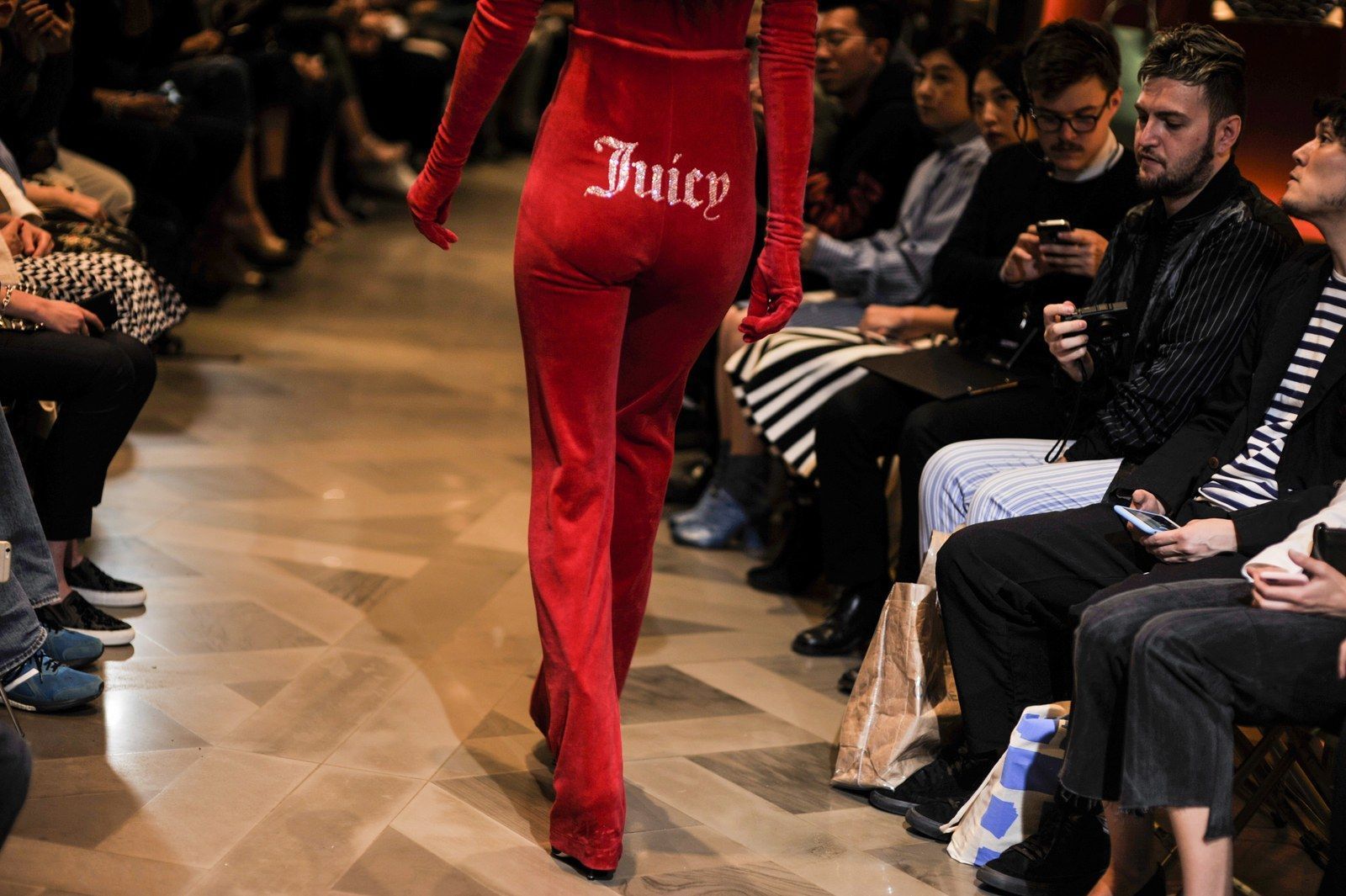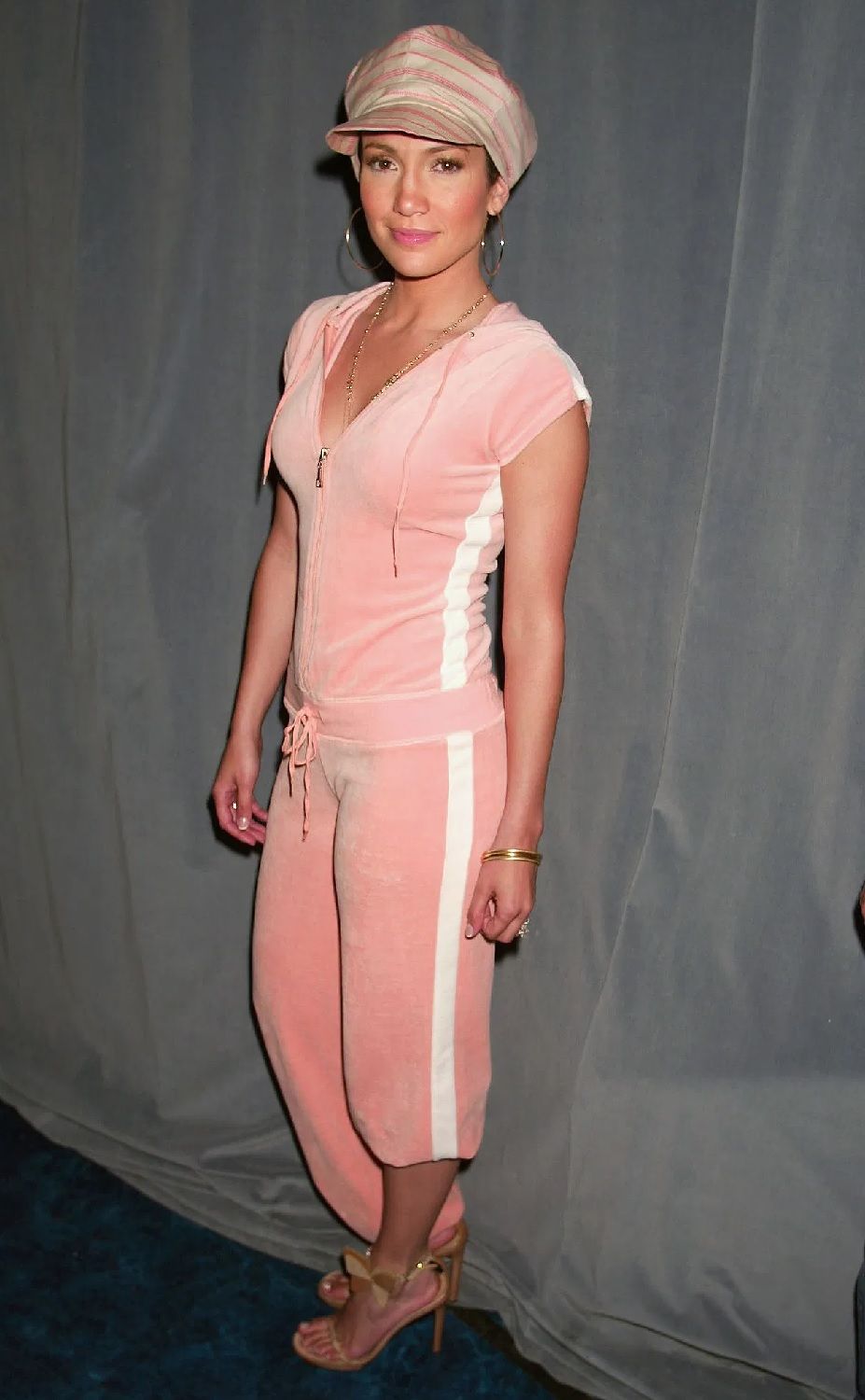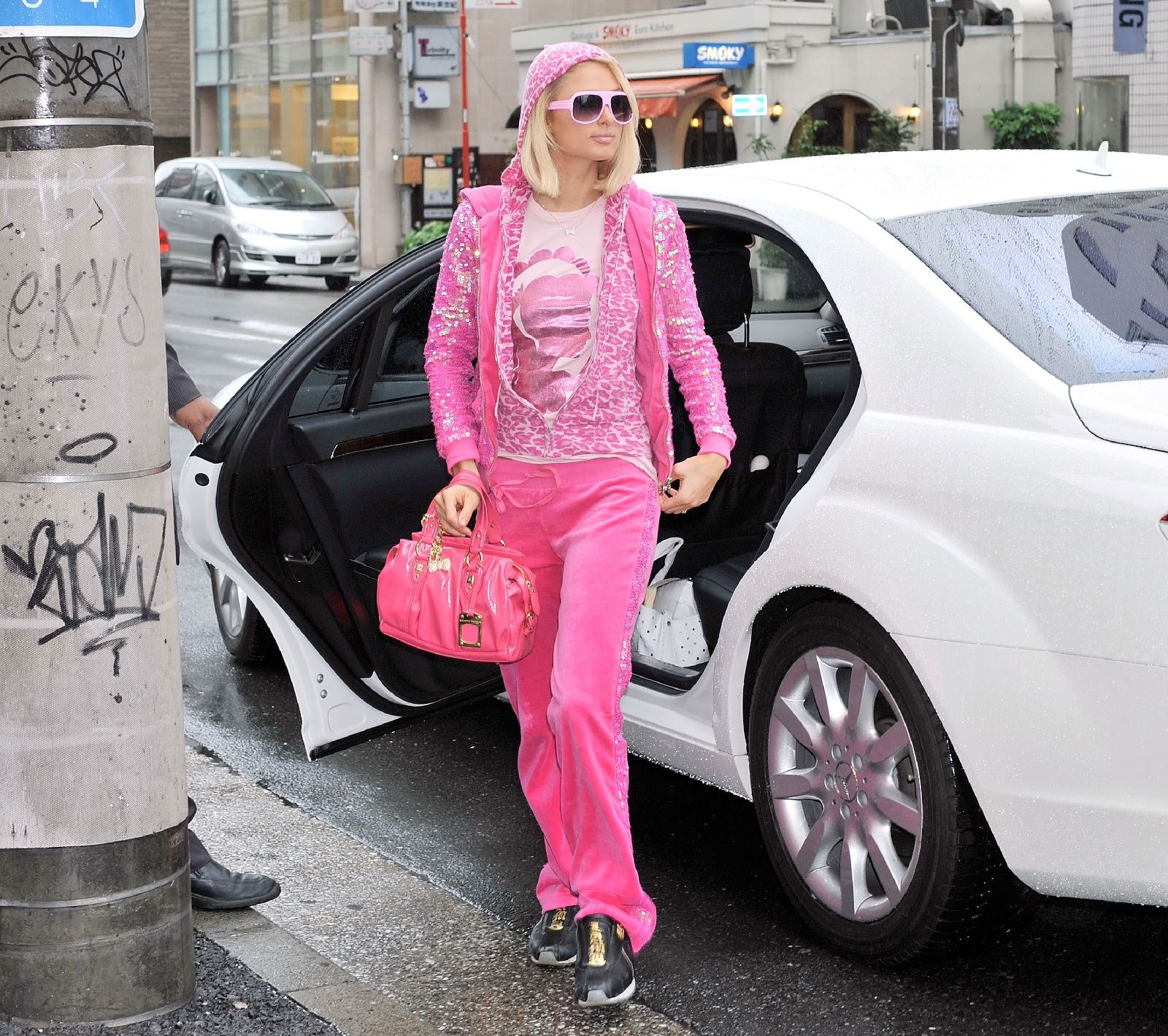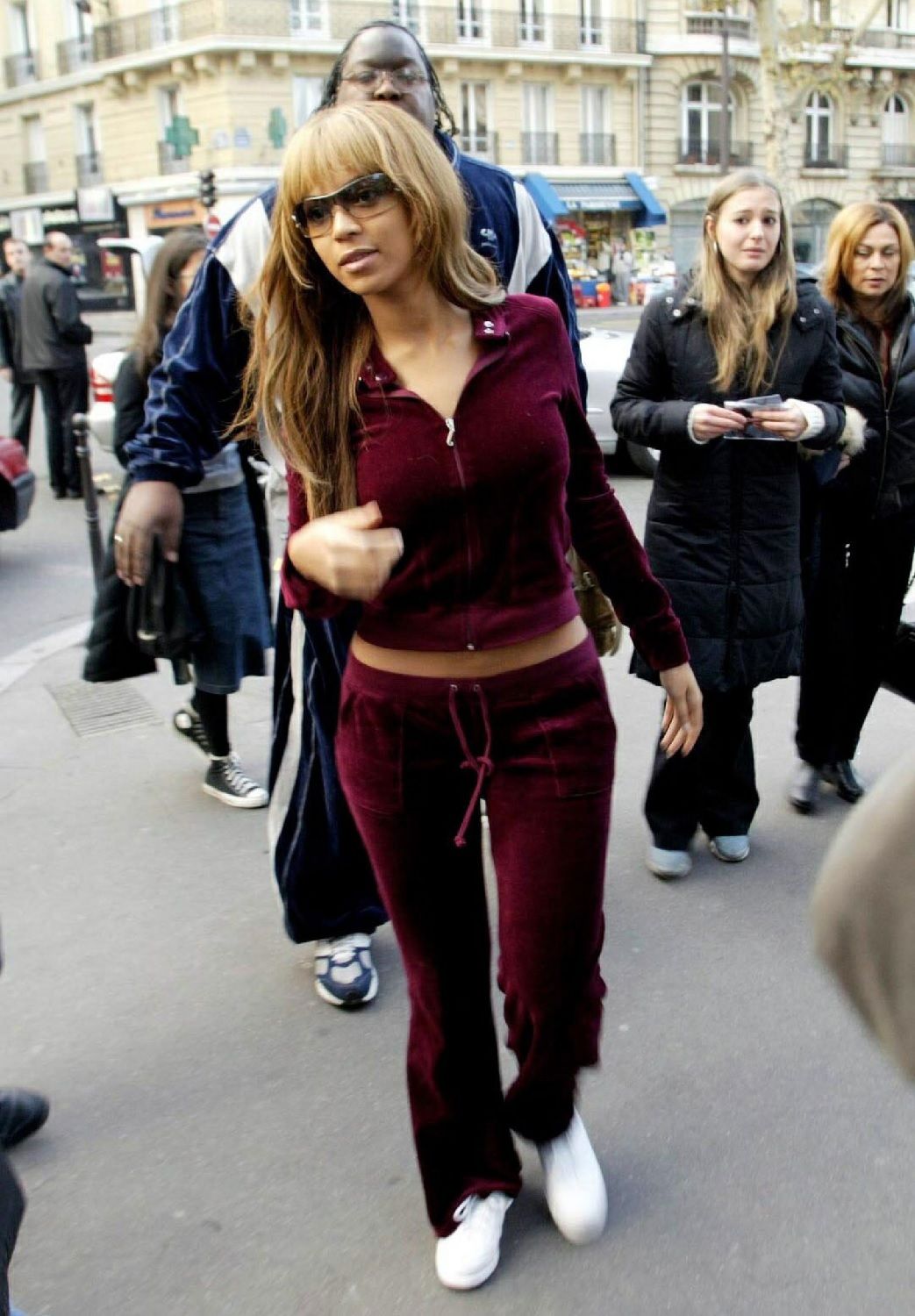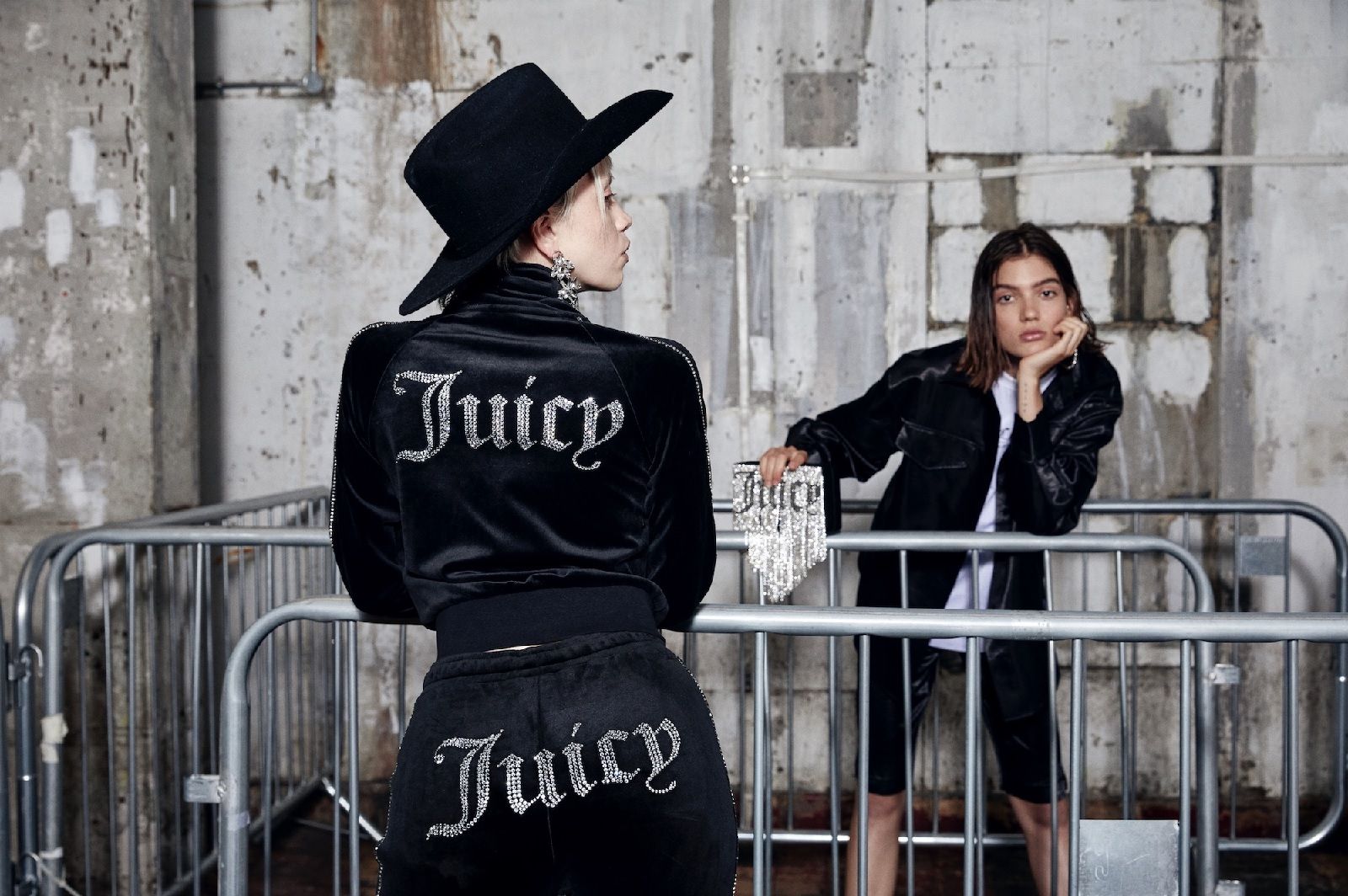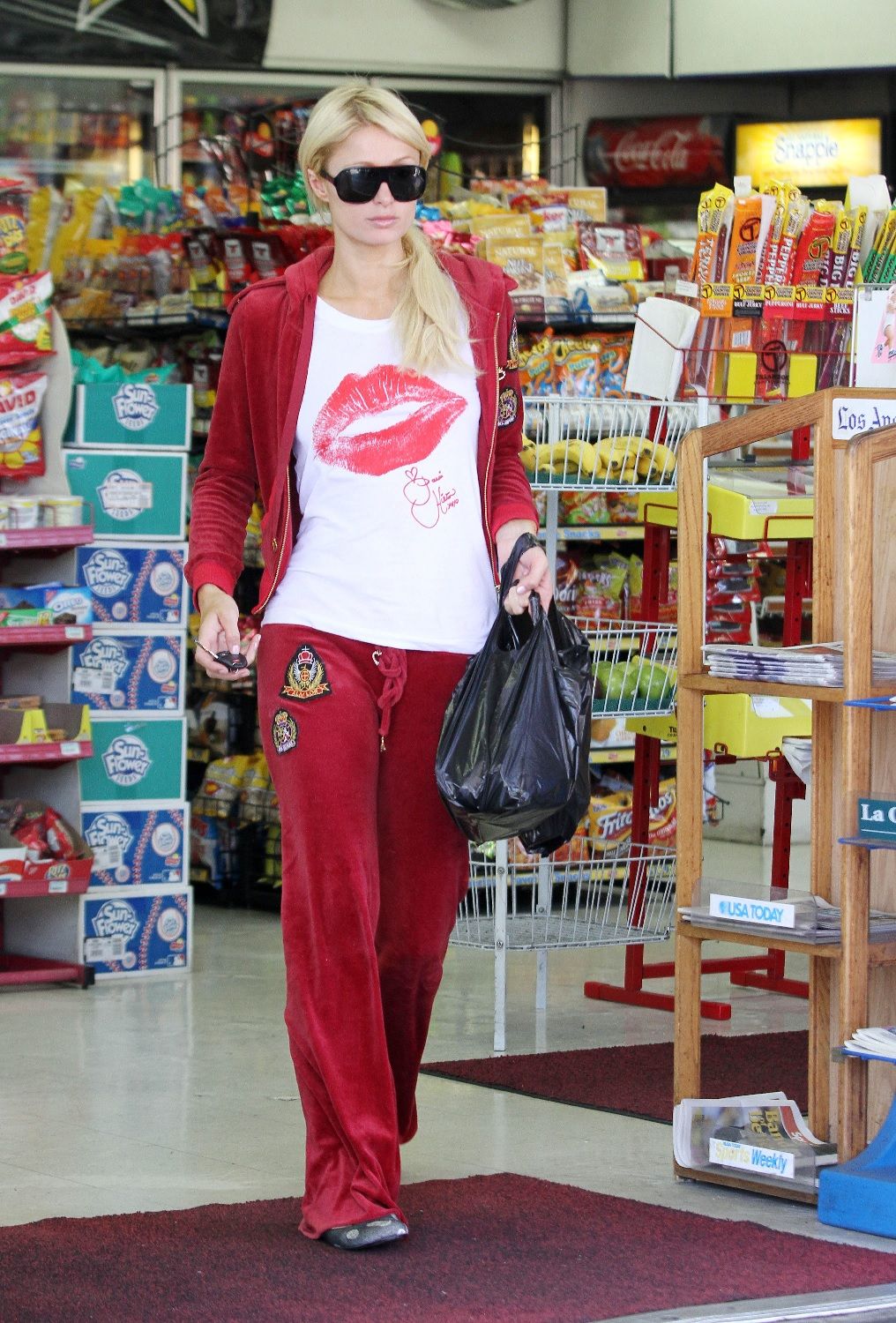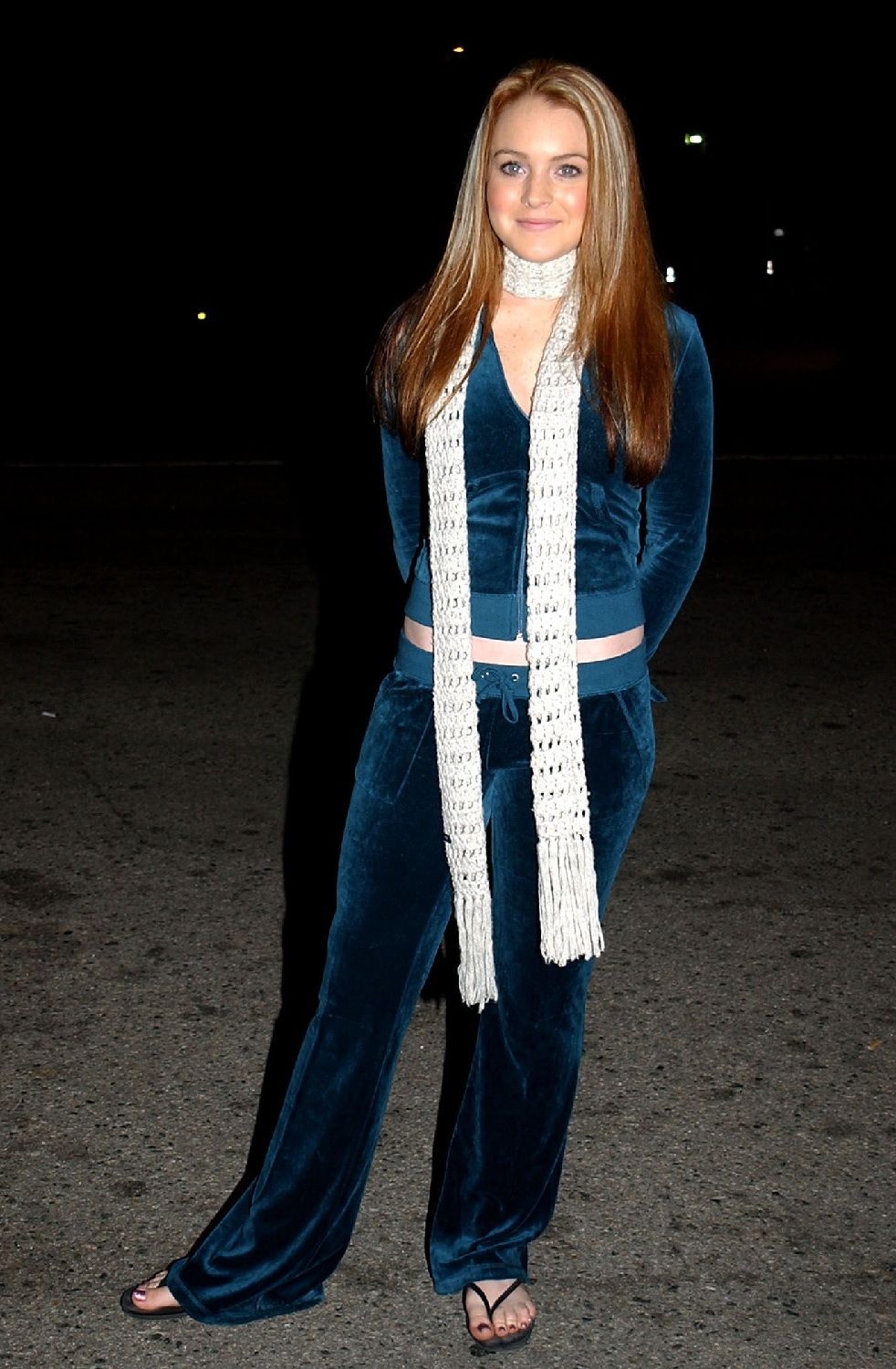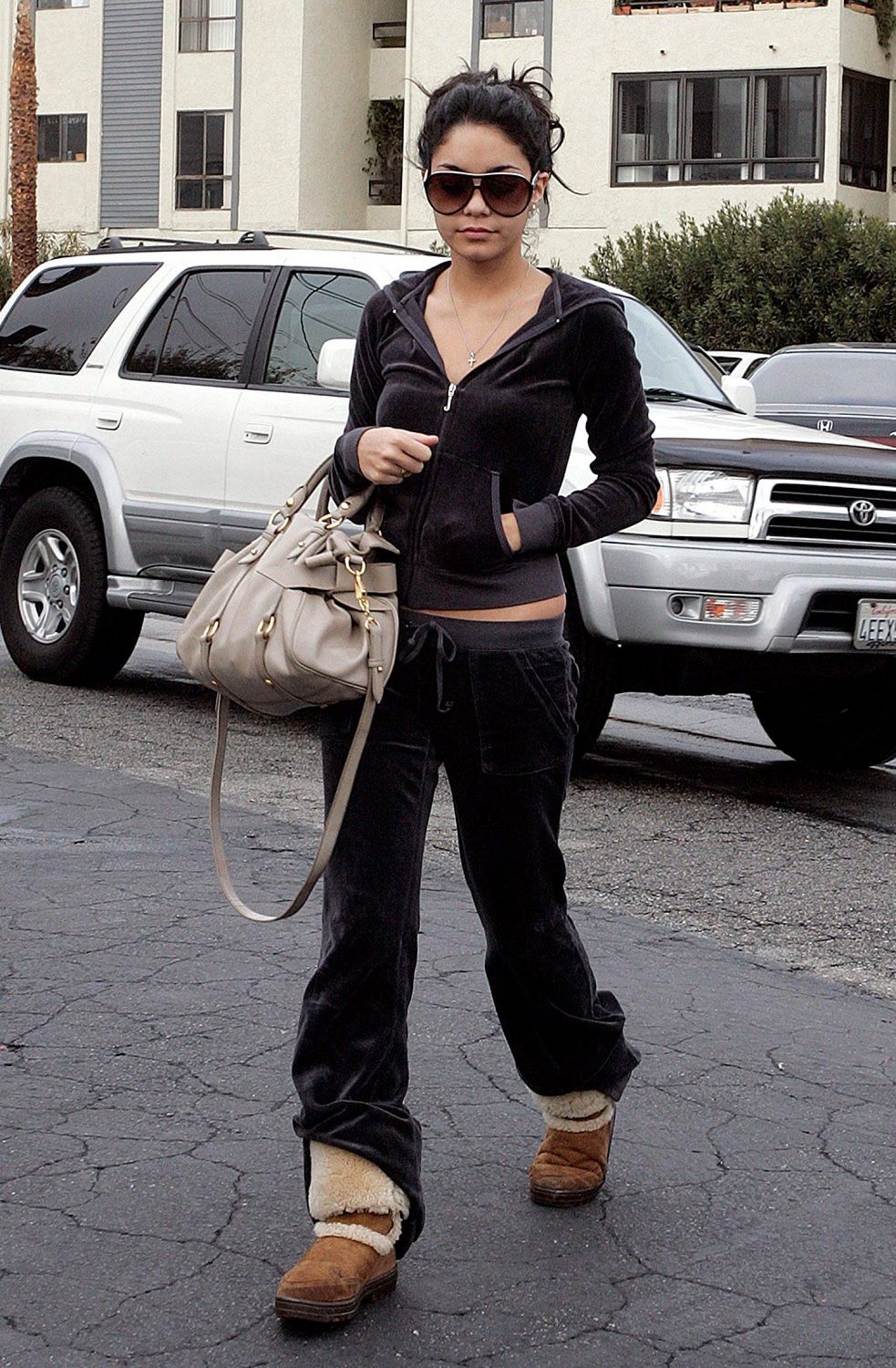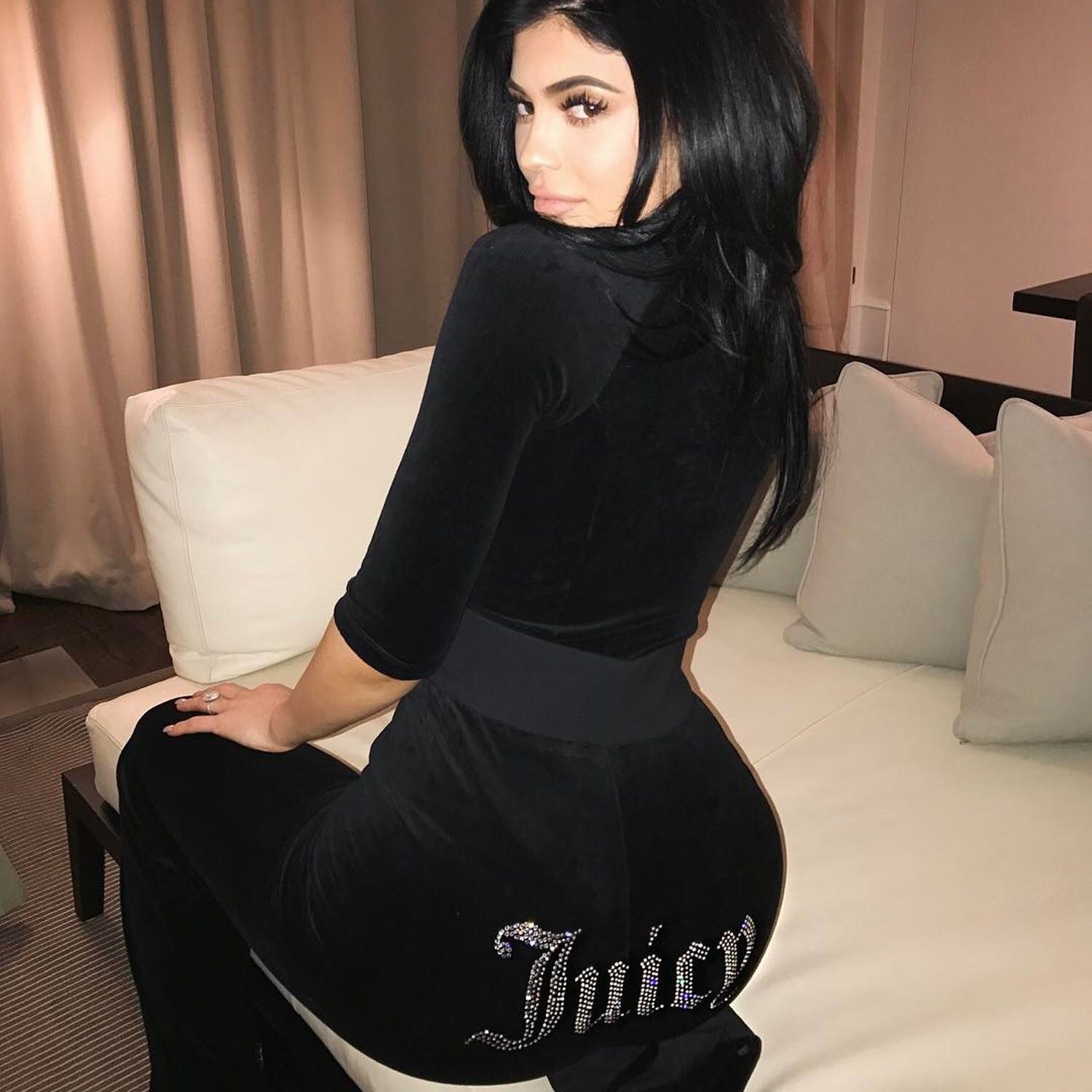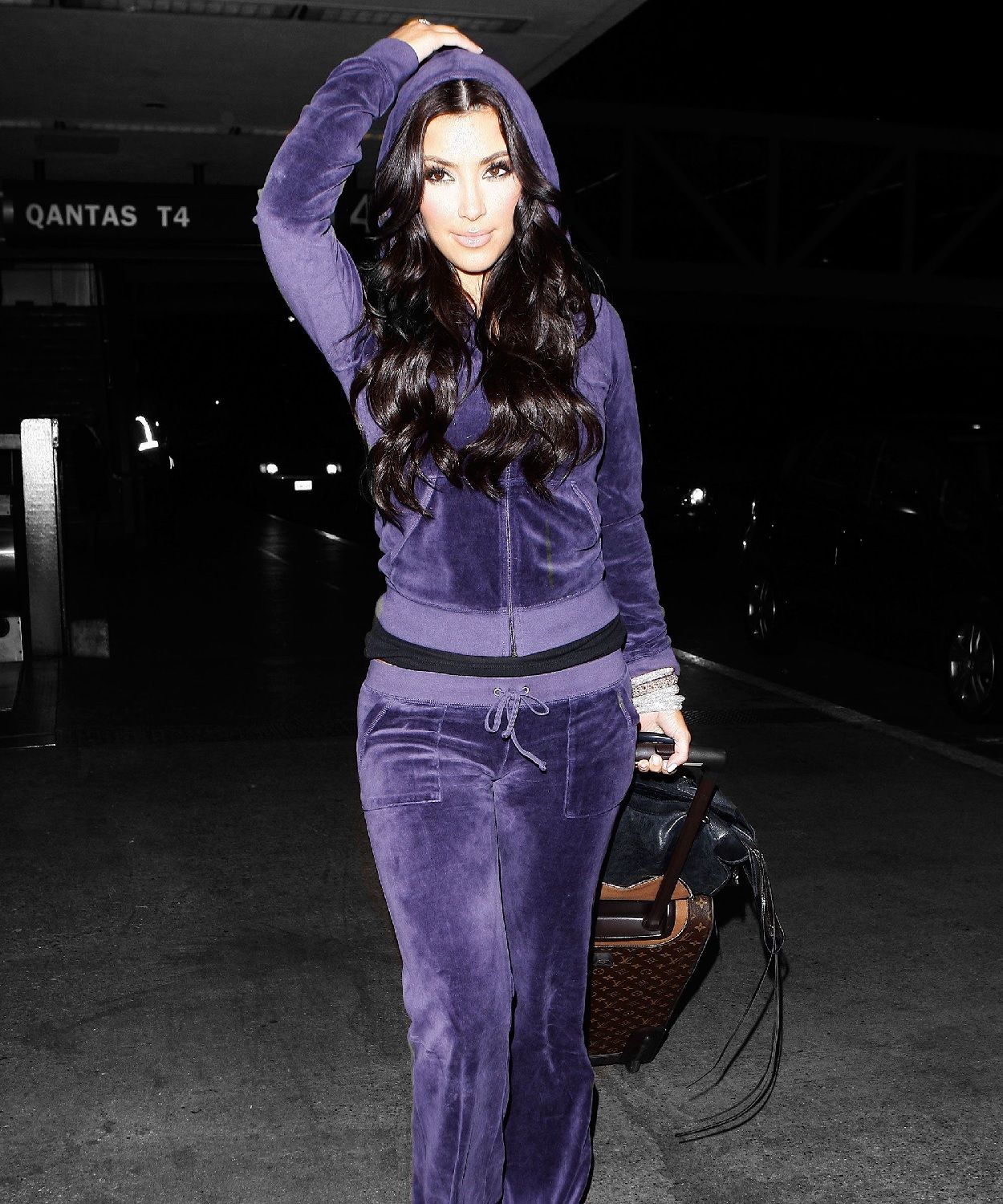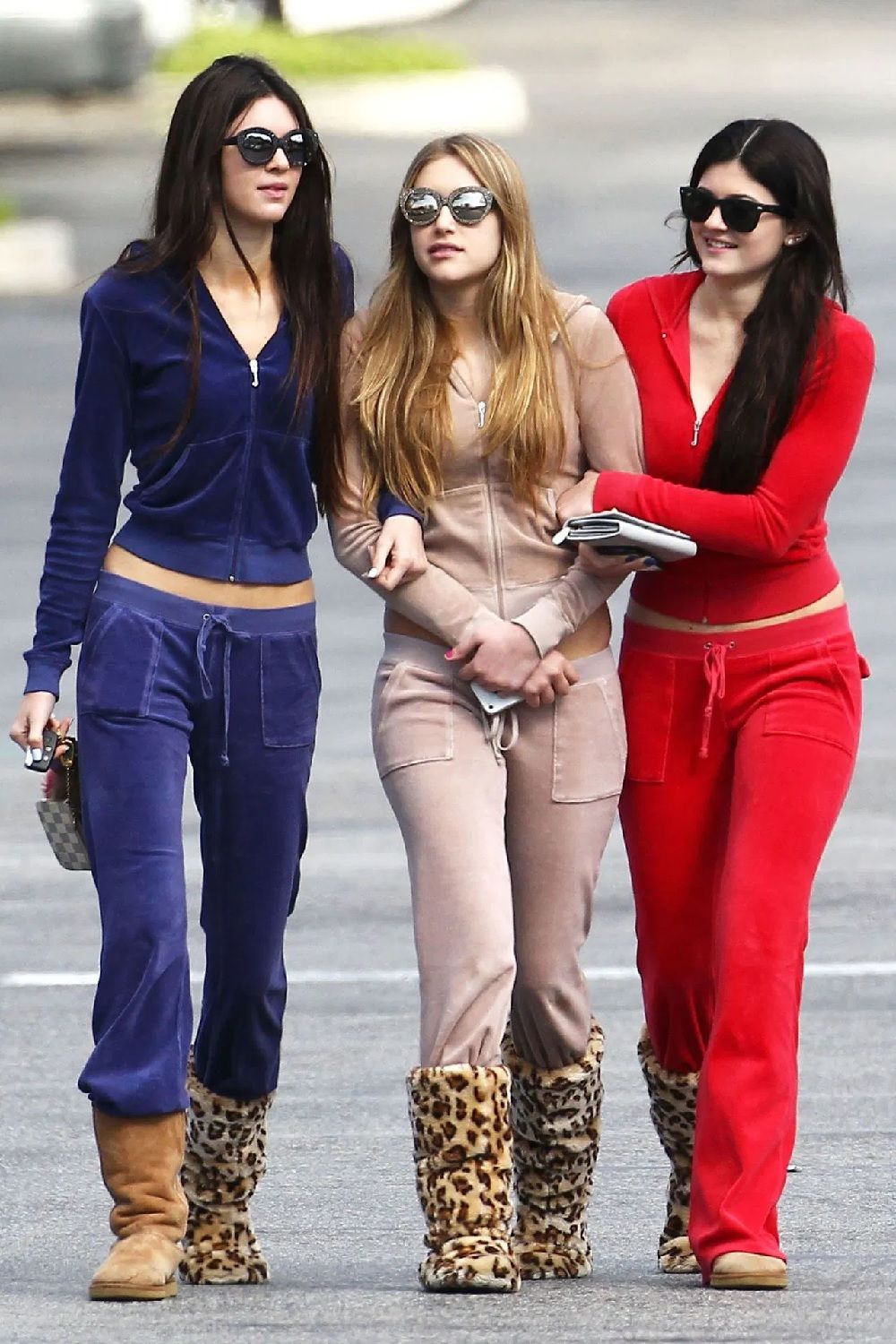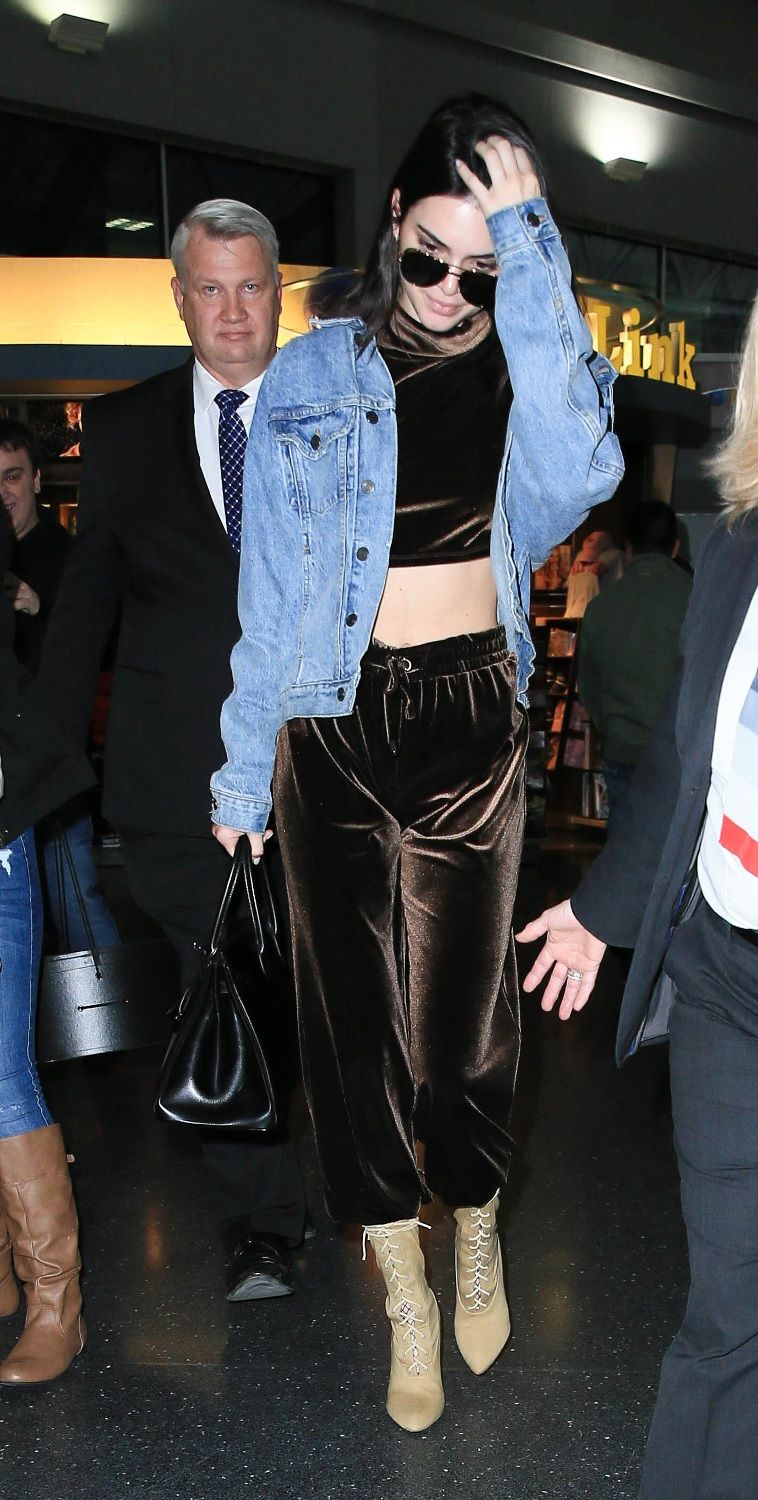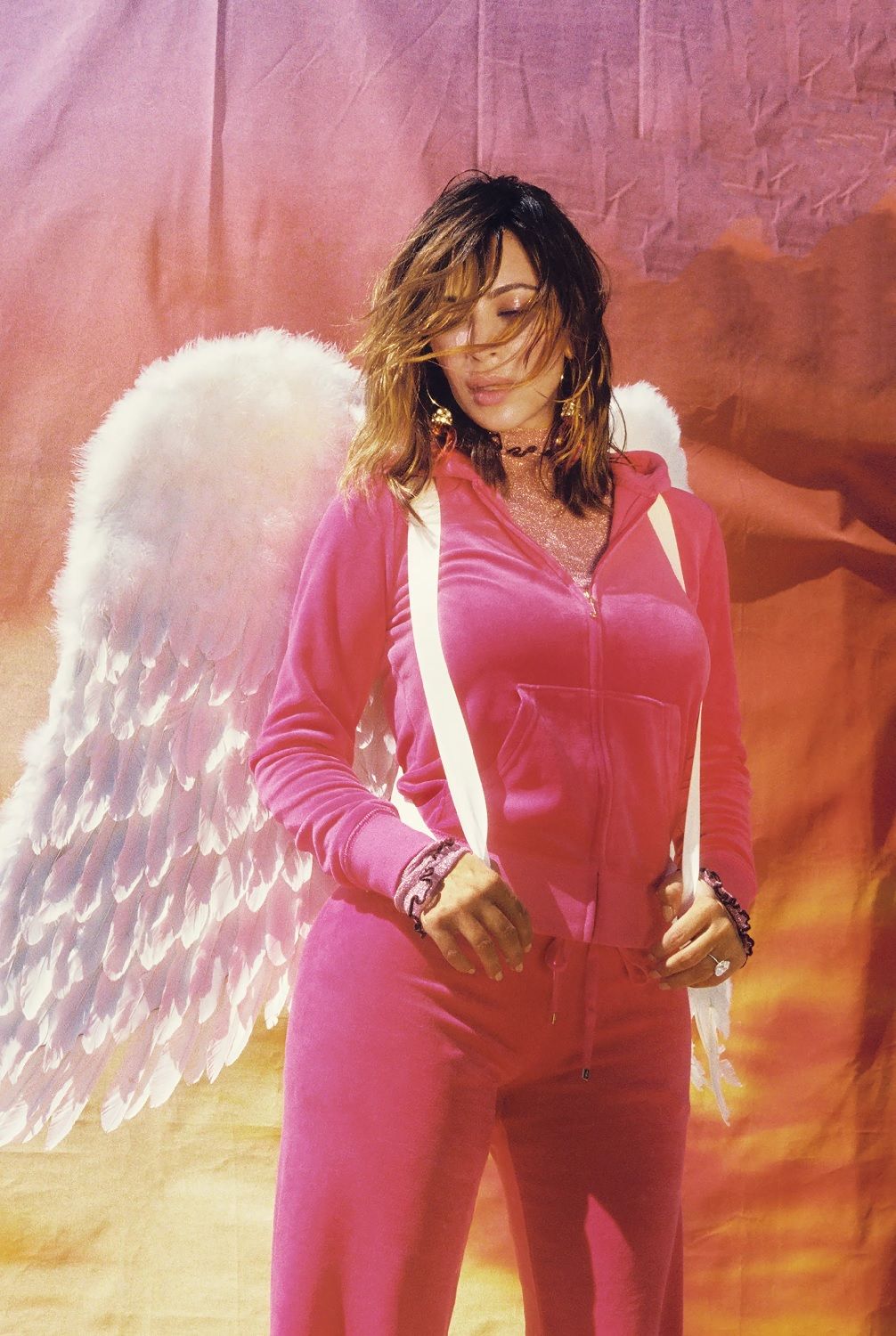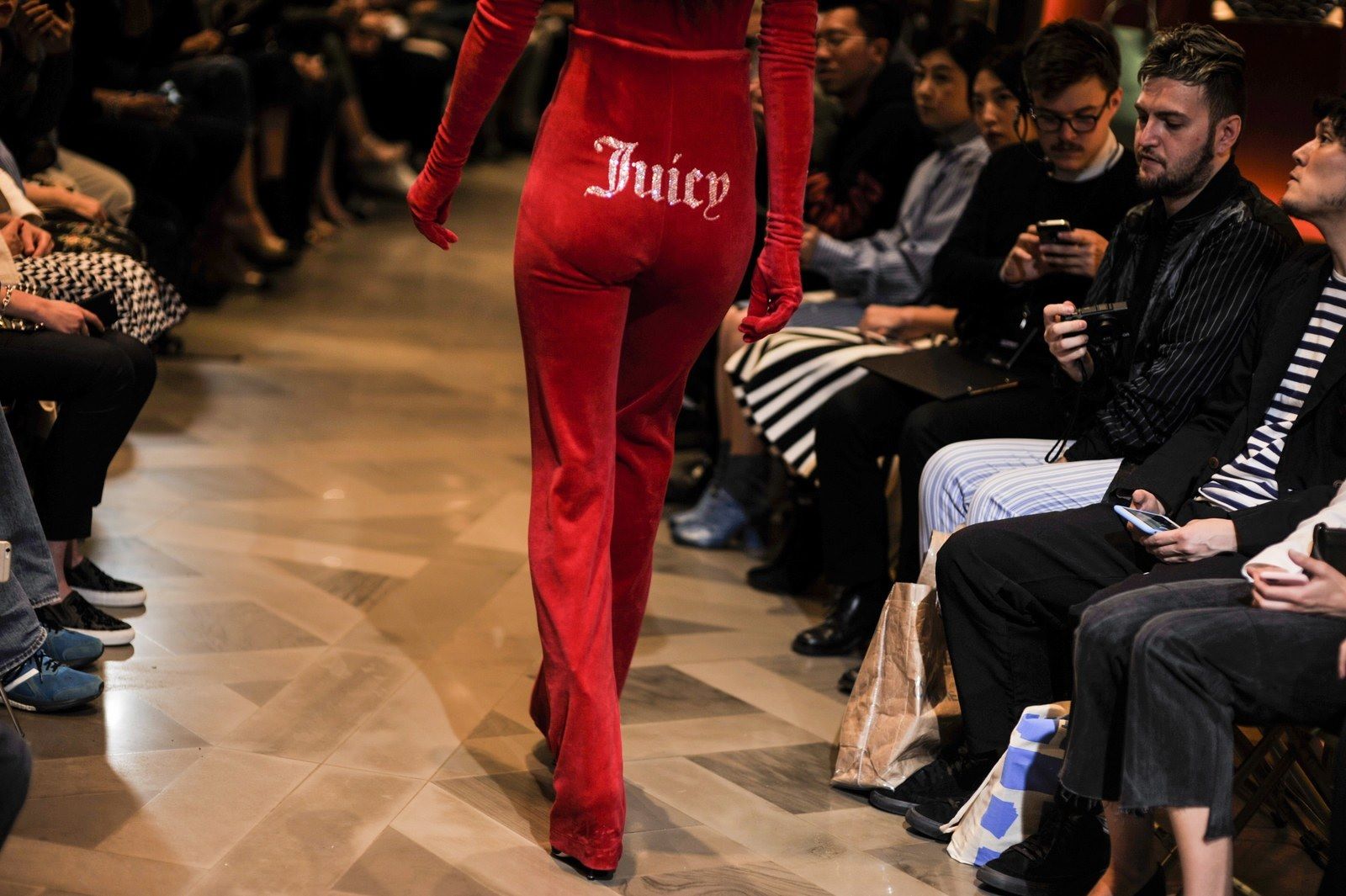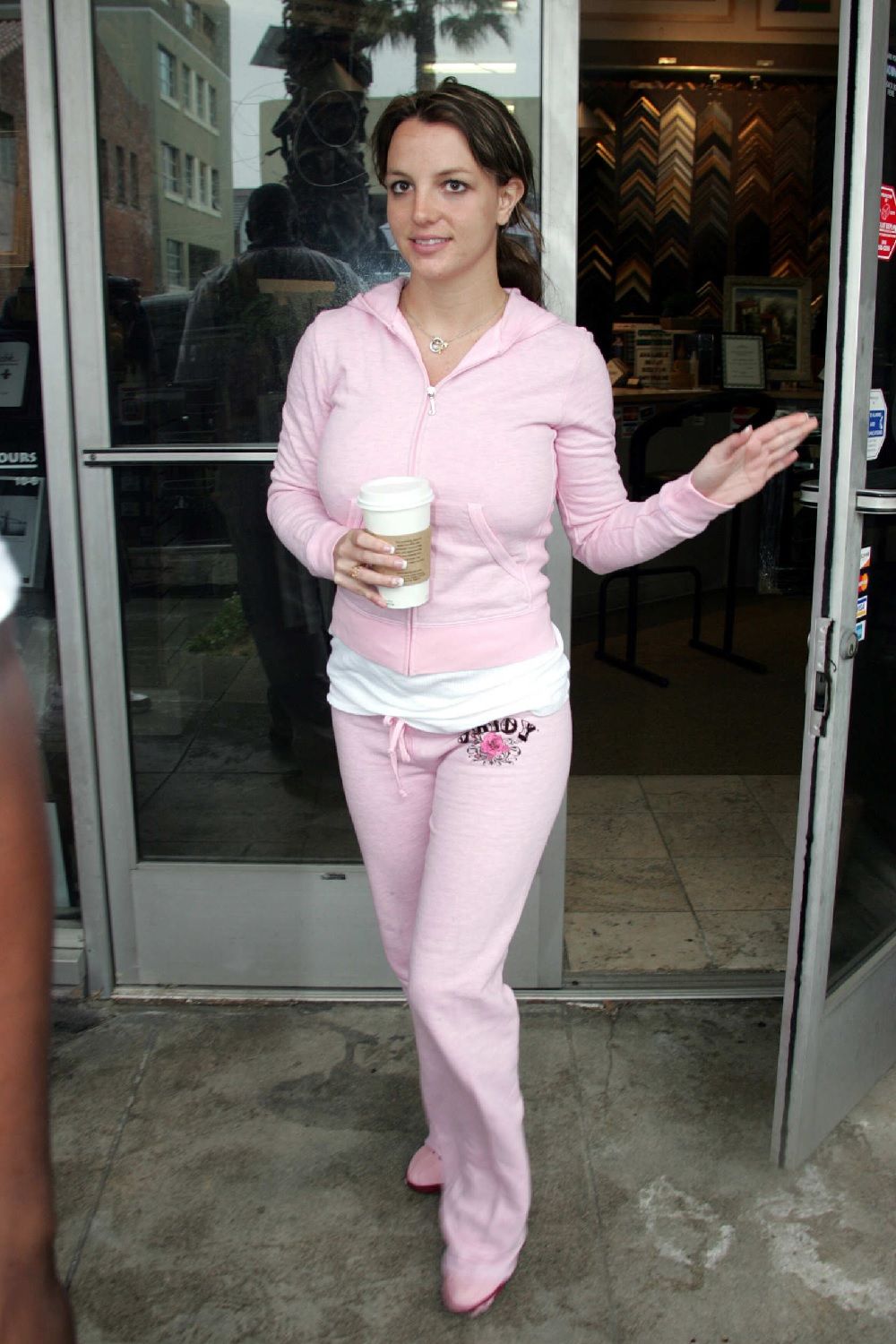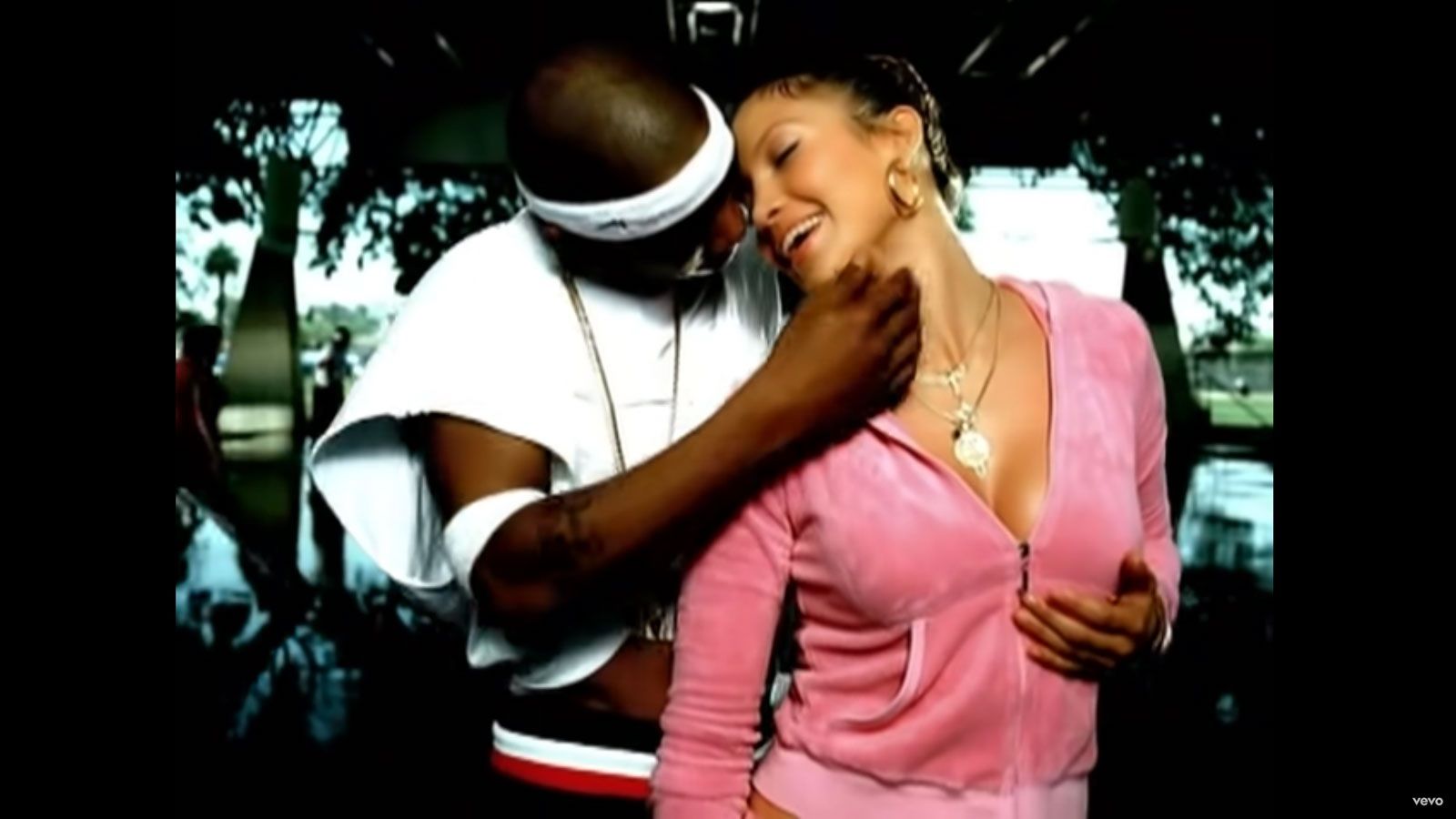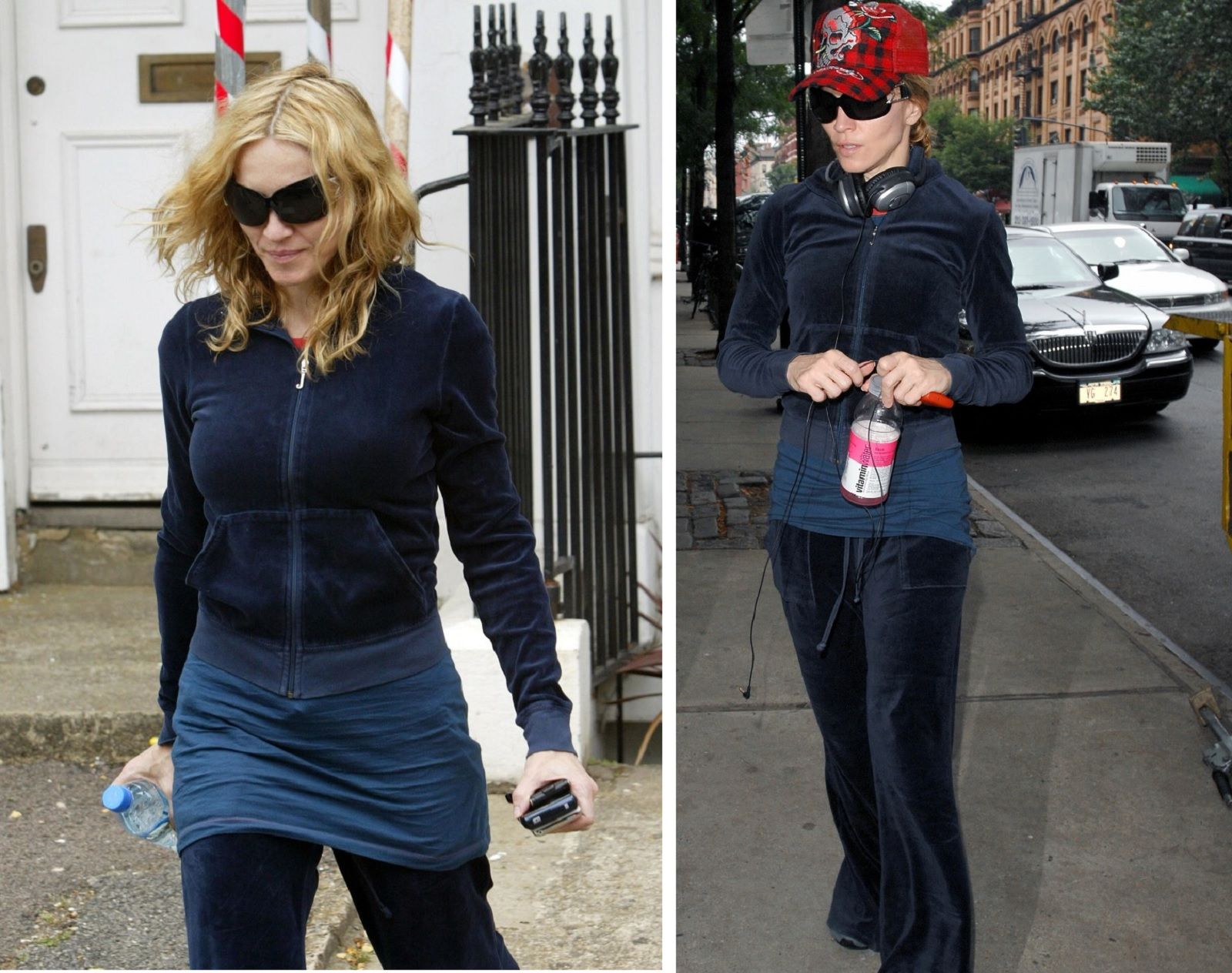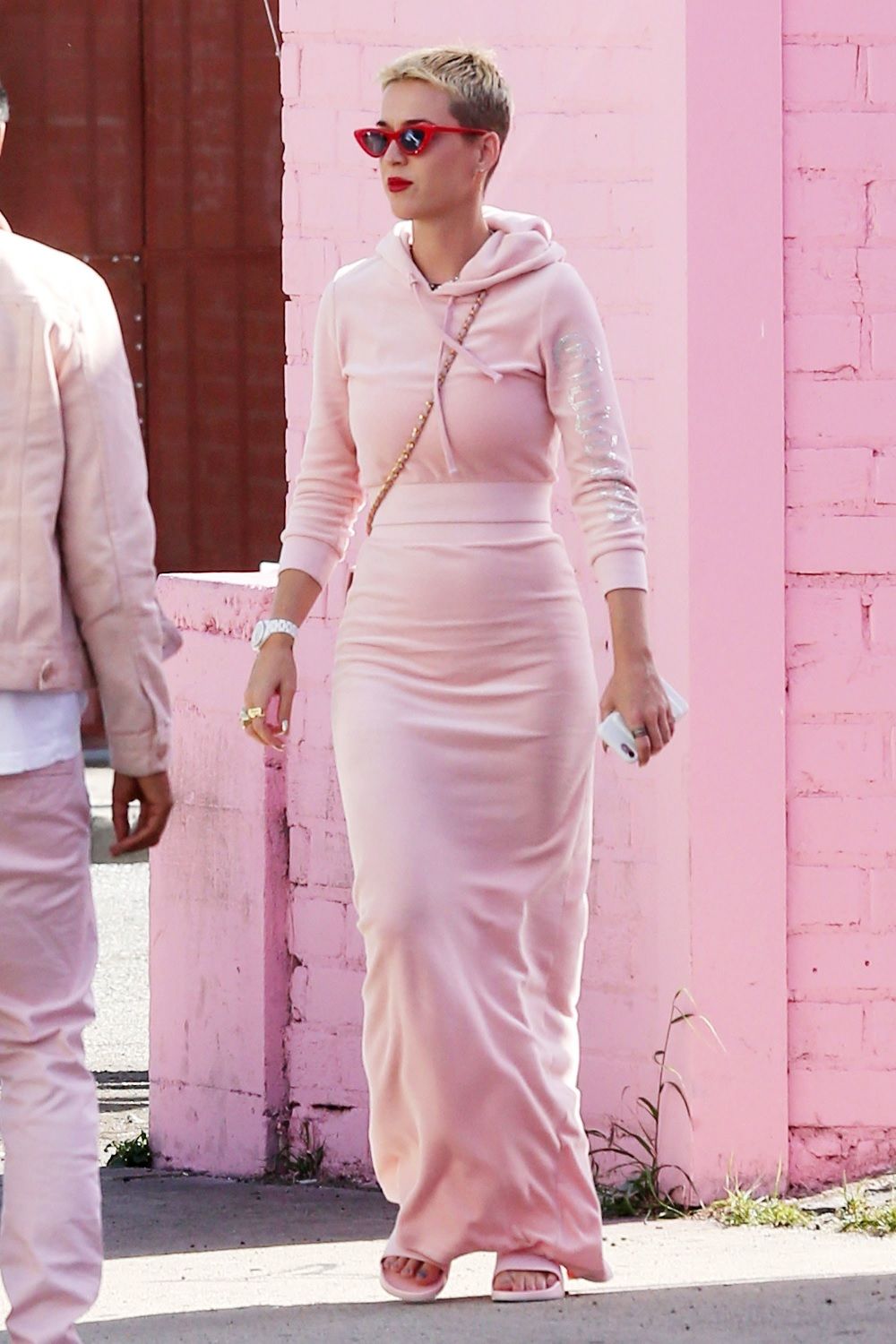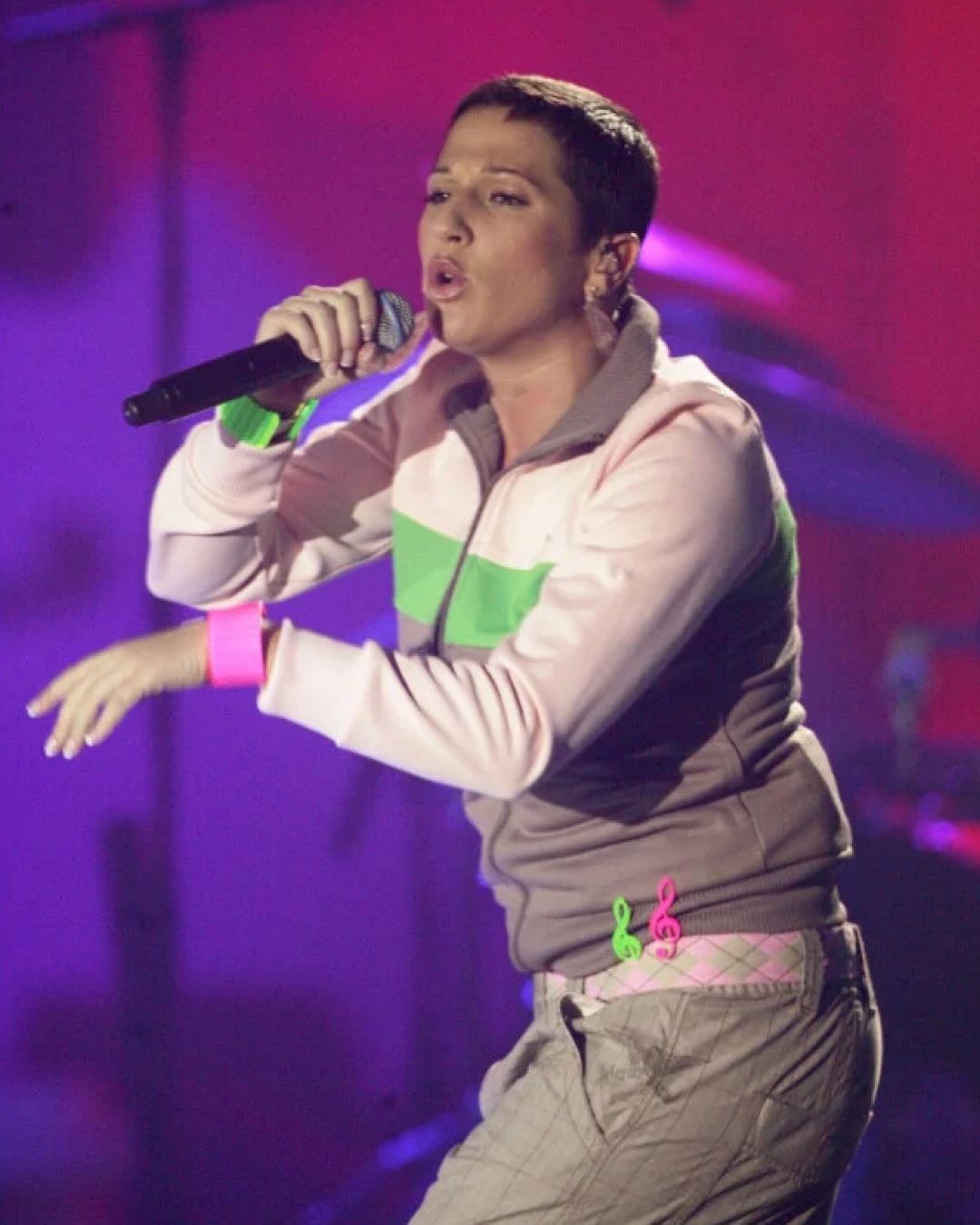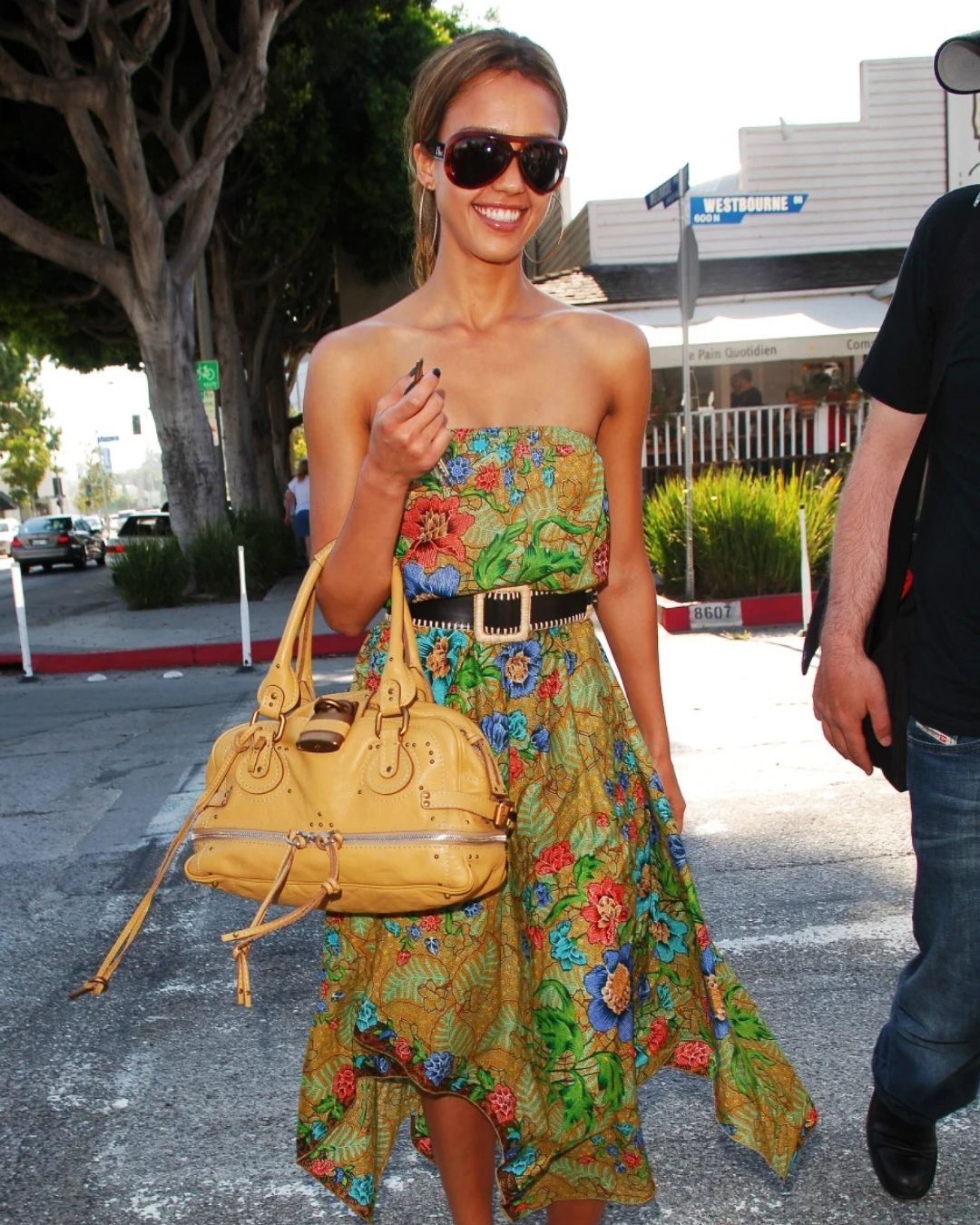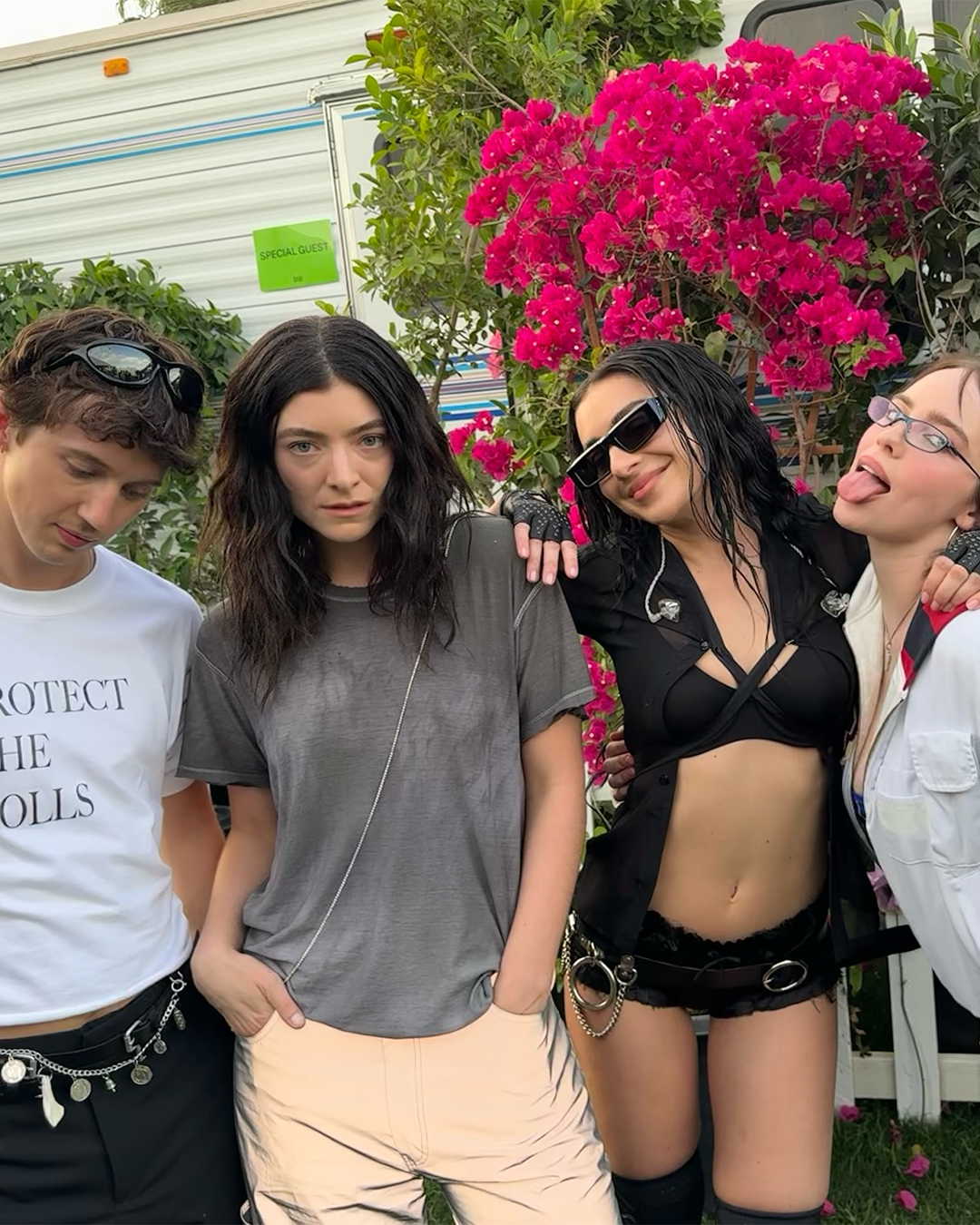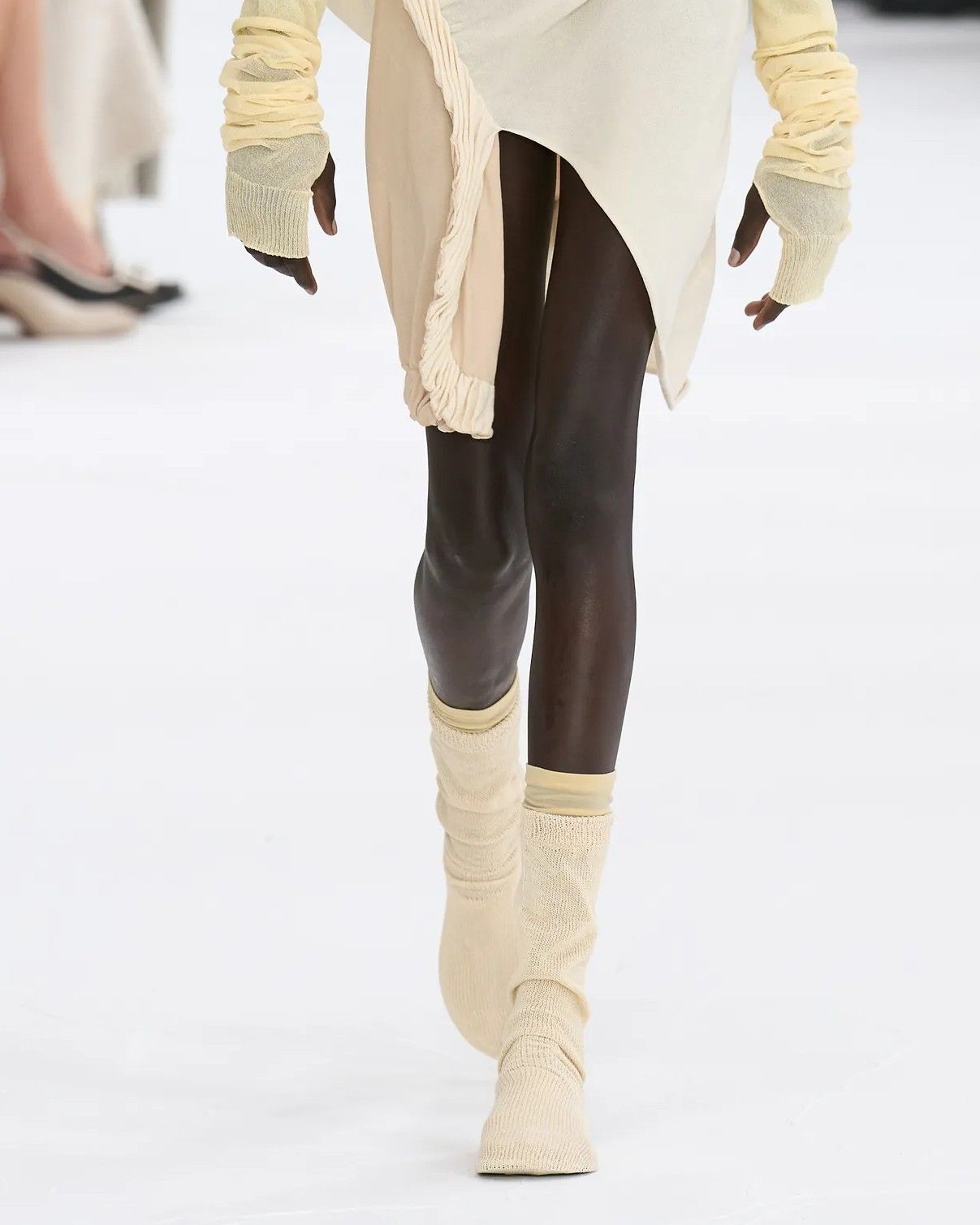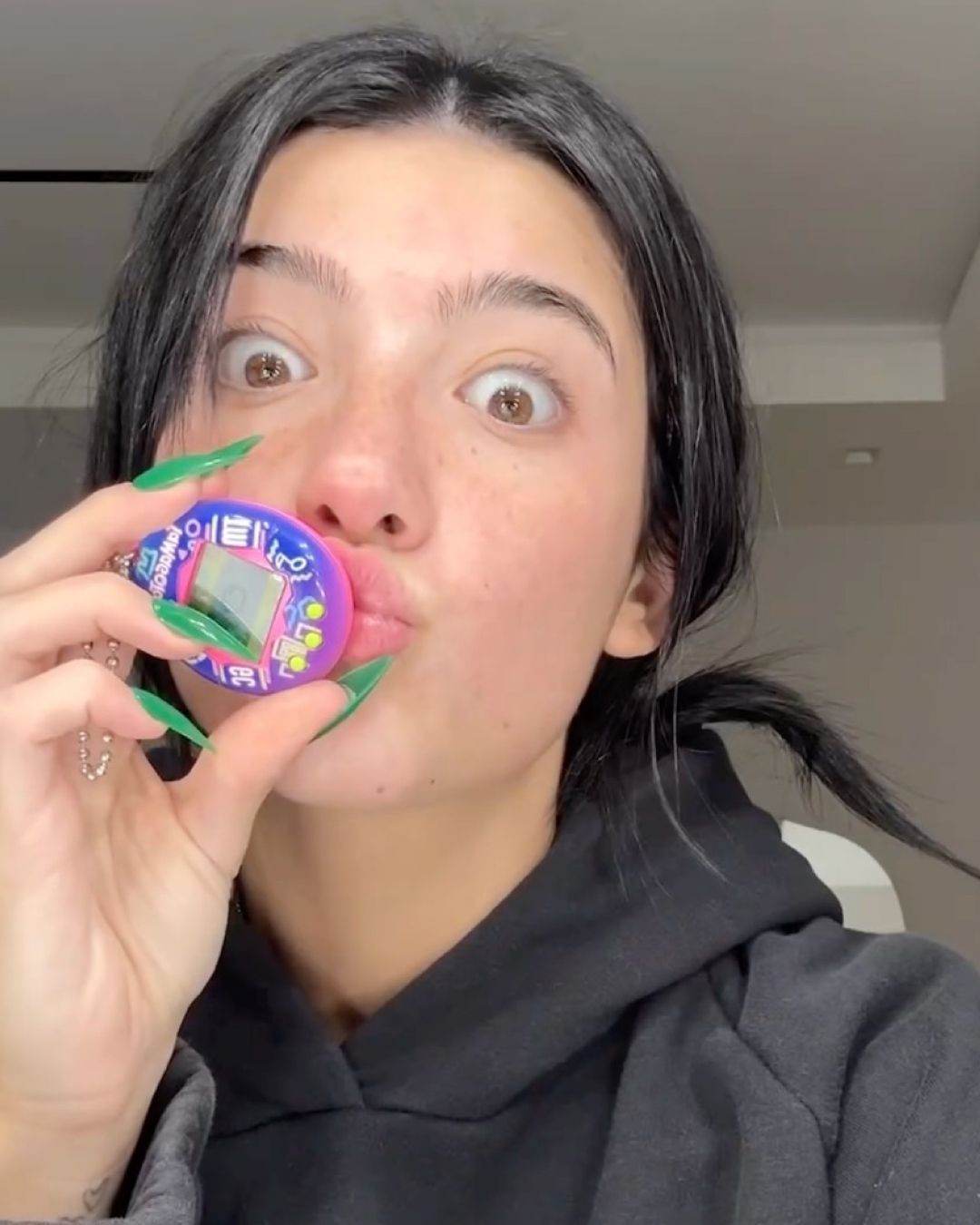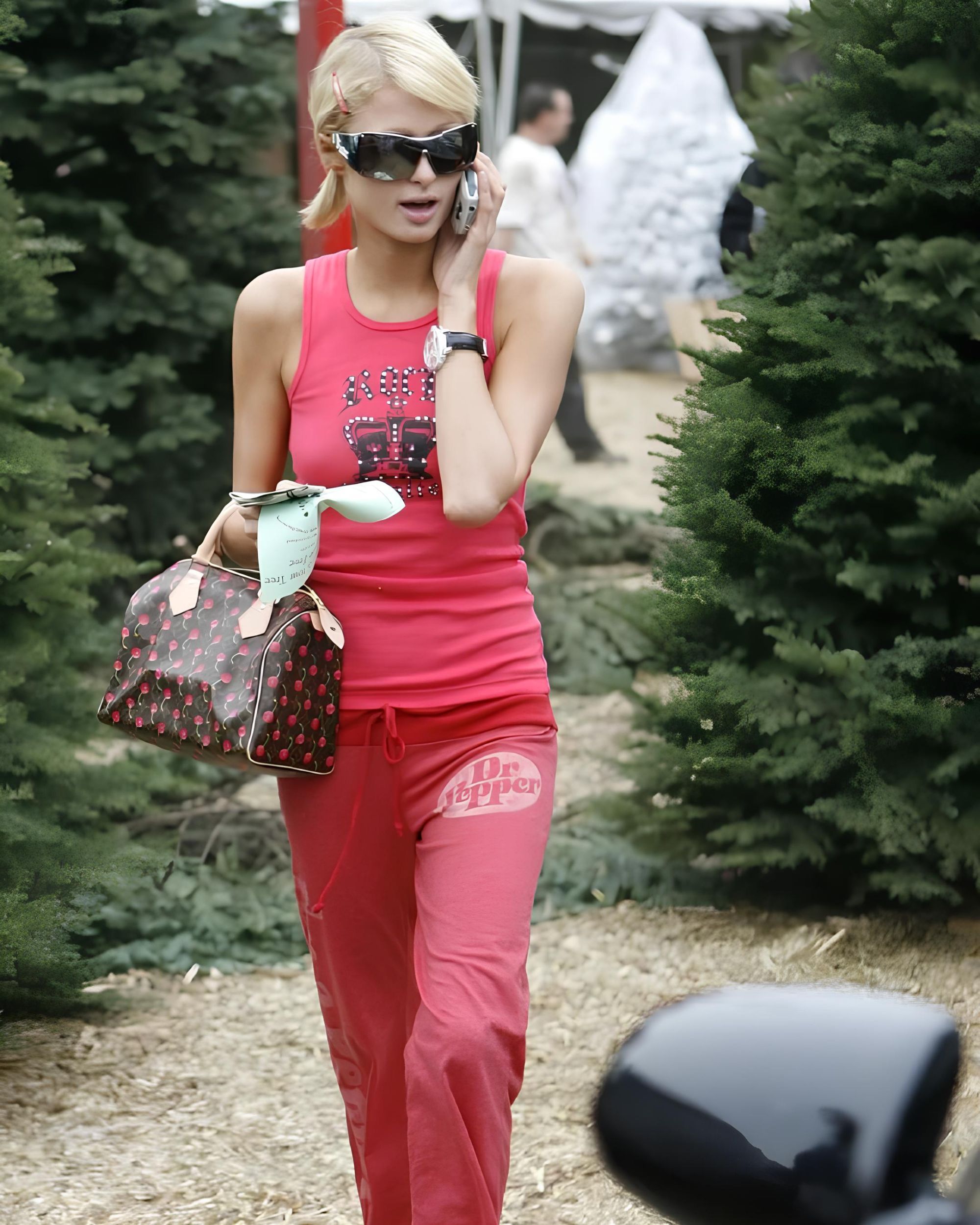
Juicy Couture: the brand that made the velour tracksuit fashionable From the success in the early 2000s to the recent return on the catwalk
On November 7, Hustlers will hit Italian screens. The movie, inspired by the article The Hustlers at Scores written by Jessica Pressle and published in New York Magazine in 2016, follows a group of strippers, led by the single mother Ramona (Jennifer Lopez), that join forces to exploit their wealthy Wall Street clientele. The story is set in the years 2006-2011 and that's why costume designer Mitchell Travers used many popular brands of that era to dress JLo, Constance Wu, Lili Reinhart and Cardi B. The most preminent of these is of course Juicy Couture.
The history of the brand began in 1988 when Gela Nash-Taylor and Pam Skaist-Levy met in a clothing boutique in Los Angeles where they worked as shop assistants, becoming friends and deciding to invest $100 each in the launch of a line of maternity pants. In 1994 Travis Jeans for the Baby in You with its vintage Levi's turned into maternity models was abandoned to create a new project called Juicy Couture. They designed tight-fitting, colorful cotton t-shirts in Gela's apartment, which then sold for 21-30 $ apiece in department stores such as Bloomingdale's and Nordstrom. In the first year, profits reached $1 million and the two businesswomen expanded their offer with dresses, skirts and other casual items. These included a velour tracksuit that became the fashion symbol of the early 2000s. Its inspiration was the concept of "casual luxury", a high-end tracksuit that, according to fashion critic Booth Moore, contributed to the rise of athleisure, pioneering brands such as Alexander Wang, Phillip Lim and Tory Burch.
In the years between the end of the old and the beginning of the new millennium, when Juicy Couture made its debut, the most important magazines, from US Weekly to InTouch, became more popular in the US market. As Lauren Sherman will recall some time later in Business Of Fashion, this timing could not have been better for the brand:
Suddenly, celebrities were being photographed more frequently off the red carpet than on it: during coffee runs, at the dog park, off-loading groceries into their SUV.
Moore, co-author with Gela Nash-Taylor and Pam Skaist-Levy of the book Glitter Plan: How We Started Juicy Couture for $200 and Turned It Into a Global Brand, shared the same opinion:
There were a lot of factors behind the brand's success: the rise of celebrity culture and the rise of celebrity magazines were two of the biggest. People started looking at celebrity paparazzi photographs for style tips. Pam and Gela were smart because they gave a lot of clothes away to celebrities. That’s a common marketing tactic now, but it wasn’t then.
The strategy of the PR Janey Lopaty was simple but powerful: she sent Juicy's clothes to it-girls and celebrities. They loved them and, with no financial return, wore them. The shot showing Madonna wearing a camel-colored model, customized with the word "Madge", her nickname in the British press, became viral and made the suit an instant trend. After the Queen of Pop, all the others must have it too. Mariah Carey wore one when she was being hospitalized for a nervous breakdown, Jessica Alba while walking her dog, Pamela Anderson while riding a bike, Cameron Diaz for a drink, Gwen Stefani at her kid's school, JLo chose a mini pink one for the video of I'm real, Britney Spears uses the tracksuit as a uniform for bridesmaids at her wedding with Kevin Federline, Paris Hilton was the first to wear a velour tracksuit on the red carpet, often pairing it with Fendi bags, and she was also the biggest fan of the Californian brand, so much so that in her reality show, The Simple Life, she claimed that she owned more than a thousand of them.
At 80$ for the pants and 75$ for the top, Juicy’s suit was affordable enough to become a part of the everyday wardrobe of thousands of girls. Cozy and available in a wide range of colors, women wore them everywhere, “often paired with Uggs for school runs, and Manolo Blahniks for dinner in Beverly Hills”. Juicy tracksuits began to appear even in many films and TV series: from Mean Girls to The OC, from The Bling Ring to Gilmore Girls, from Legally Blonde to Sex & the City. Nash-Taylor and Skaist-Levy were able to turn a sloppy, anti-fashion style into a must have, selling the lifestyle of Los Angeles and Hollywood.
In 2003, Skaist-Levy and Nash-Taylor sold Juicy Couture to Liz Claiborne (now Fifth & Pacific Companies, Inc.) for $53.1 million, but they remained in charge of the brand until 2010. The company continued to grow from $47 million in 2002 to $493.8 million in 2007 and added several categories to its offer, including jeans, jewelry and, in partnership with Elizabeth Arden, perfumes. The Californian brand seemed unstoppable. Then came the crisis and Juicy's profits started to lower every year, until Fifth & Pacific was forced to sell to Authentic Brand Group, which decided to close all the stores in the United States, focusing instead on granting licenses to supervise the brand. How could this happen? Many think that the main cause of this failure is due to the fact that Juicy was always offering the same product without evolving or adapting to the changing times.
Then something happened. It's said that there are three key steps that cement something as a trend. The first step is having a revered luxury brand endorse said piece on the catwalk. The second is street fashion support, whether or not that piece is replicated for the masses. Thirdly, you need a popular celebrity or street-style influencer to wear it (at the moment, this tends to be a Hadid or Jenner). In 2017 Juicy made it happen. Demna Gvasalia collaborated with the most loved brand of the early 2000's and brought it back on the catwalk for the SS17 collection of Vetements. The garments were hugely successful and everyone, from Rihanna to Kylie Jenner, wore them. The spotlight was once again on Juicy and the company used the opportunity to hire Jamie Mizrahi as creative director and attend New York Fashion Week.
Recently, a new TV show centered to the brand and the two founders, Pamela Skaist Levy and Gela Nash Taylor, has been announced, which will be broadcast on the television channel E!. The show will take inspiration from their 2014 book and will be produced by Mila Kunis together with Josh Schwartz and Stephanie Savage (previously involved in Gossip Girl). If the project will be successful, Juicy Couture may come back and invade our wardrobes again.










































